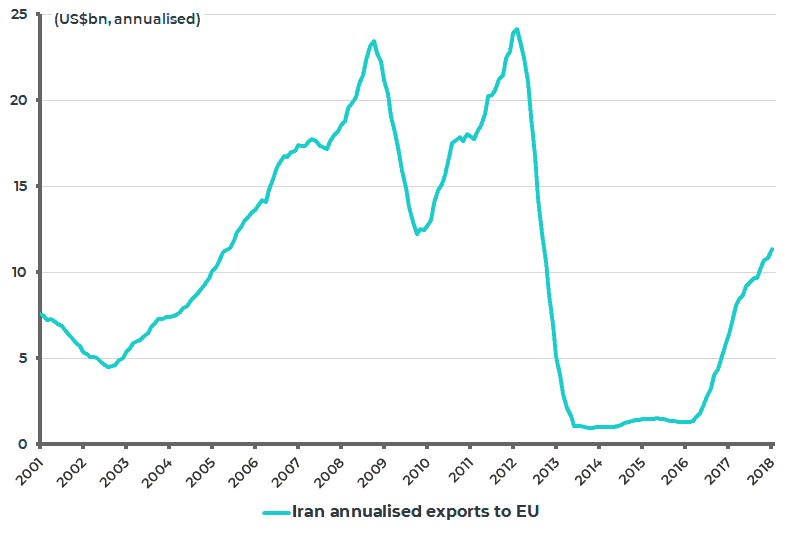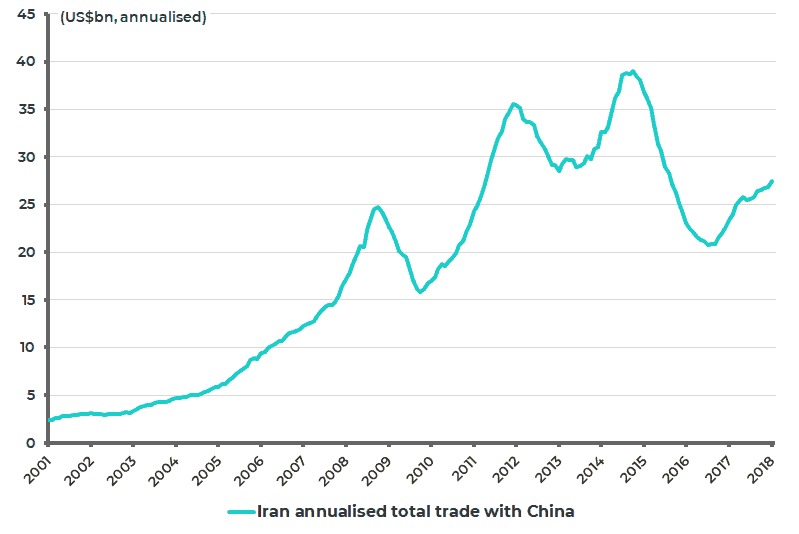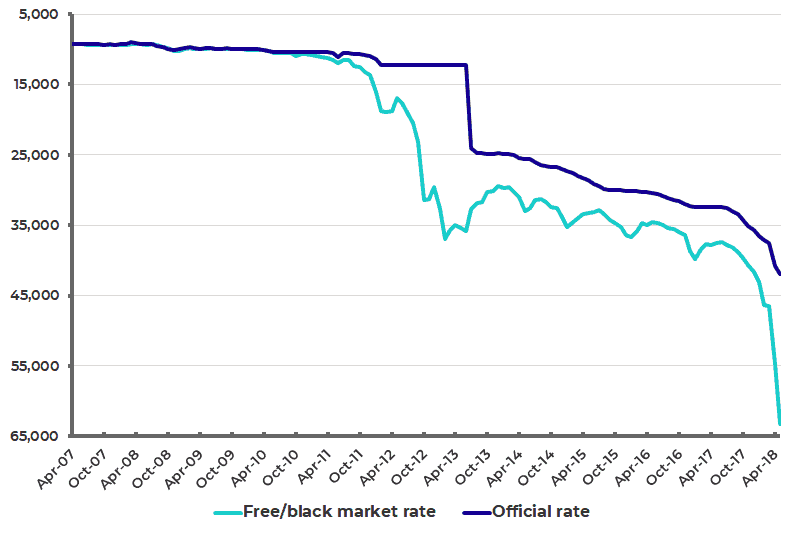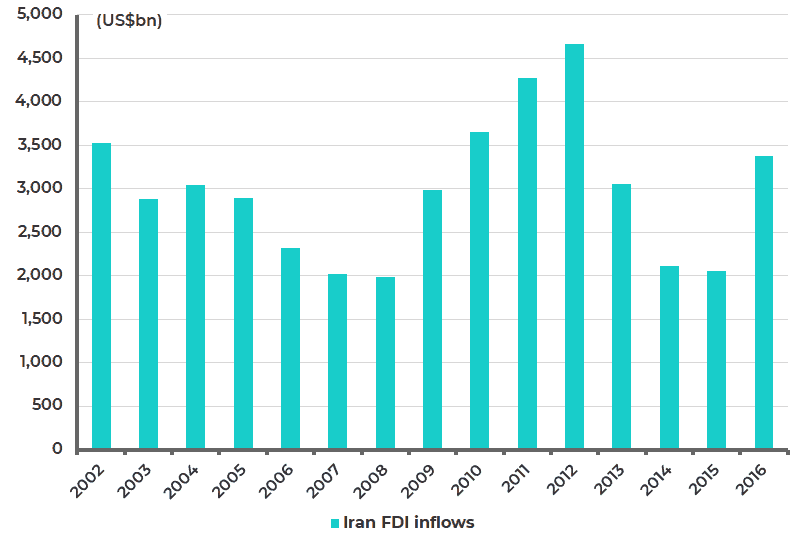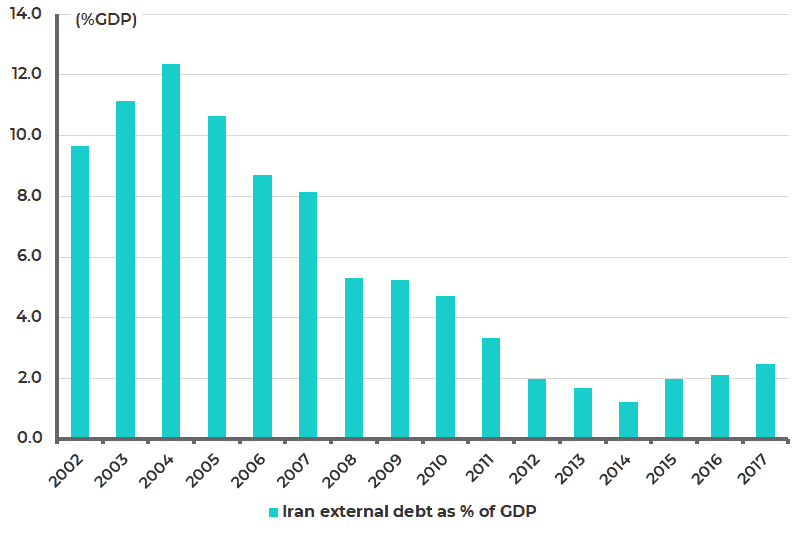The latest Israeli Gaza Massacre in which Apartheid Israeli soldiers shot and killed 116 unarmed Palestinian protesters and wounded 13,000, has divided the world into 2 camps, (1) the Good,those who have variously reacted with horror, condemnation and demands for action against the Israeli perpetrators, and (2) the Bad, those whose responses have been to support the perpetrators or have been otherwise deficient. Decent anti-racist people around the world have been galvanized by these latest Gaza Massacres to urge and apply Boycotts, Divestment and Sanctions (BDS) against Apartheid Israel and all its supporters after the example of the ultimately successful Boycotts and Sanctions against Apartheid South Africa and its supporters after the 1960 Sharpeville Massacre in which 69 unarmed African protesters were killed and 220 wounded by Apartheid South African police.
Before presenting an updated, carefully-documented and alphabetically-organized compendium of such humane Good responses and of heartless or deficient Bad responses it is important to summarize the background to the latest Israeli Gaza Massacre .
- Palestinian Genocide. In Palestine in 1880 there were about 500,000 Arab Palestinians and about 25,000 Jews (half of the latter being immigrants). Genocidally racist Zionists have been responsible for a Palestinian Genocide involving successive mass expulsions (800,000 in the 1948 Nakba (Catastrophe) and 400,000 in the 1967 Naksa (Setback) , ethnic cleansing of 90% of the land of Palestine, and in the century since the British invasion of Palestine about 2.3 million Palestinian deaths from violence (0.1 million) or from violently-imposed deprivation (2.2 million) [1-16]. Article 2 of the UN Genocide Convention defines genocide as any of the following acts committed with intent to destroy, in whole or in part, a national, ethnic, racial or religious group, as such: a) Killing members of the group; b) Causing serious bodily or mental harm to members of the group; c) Deliberately inflicting on the group conditions of life calculated to bring about its physical destruction in whole or in part; d) Imposing measures intended to prevent births within the group; e) Forcibly transferring children of the group to another group” [17]. Genocidal “intent” is established by sustained ethnic cleansing action and more rarely by confession. However the genocidal Zionists established “intent” by a remorseless, 100 year and continuing Palestinian Genocide and numerous statements of genocidal intent from the Zionist leadership from racist psychopath Theodor Herzl to serial war criminal Benjamin Netanyahu [13, 14]. As estimated from under-5 infant mortality data, presently 4,200 Occupied Palestinians die avoidably from imposed deprivation each year (2,900 in the Gaza Concentration Camp and 1,300 in West Bank ghettoes) [16], and an average of about 550 are killed violently each year by racist Zionists [15]. There are 7 million Exiled Indigenous Palestinians who are forbidden to step foot in their own country. There are presently about 65 million refugees in the world of which half are Muslims and 7 million are Palestinians.
- Poverty kills Palestinians. Poverty kills and Israeli Apartheid entrenches inequality and poverty in an ongoing Palestinian Genocide and a continuing war criminal Occupation. The per capita GDP for the West Bank and Gaza is $1,924 and $876, respectively, as compared to $39,000 for Apartheid Israel [18, 19]. The populations of the West Bank and the Gaza Concentration Camp are 3 million and 2 million, respectively, and thus the GDP of the West Bank and Gaza are $5.772 billion and $1.752 billion, respectively, as compared to the GDP of Apartheid Israel (population 8.8 million) of $342 billion [20]. Let W = annual West Bank avoidable deaths and let G = annual Gaza avoidable deaths so that W + G = 4,200. Now avoidable deaths are inversely proportional to per capita income and accordingly W/G = 876/1,924 and thus W= 876G/1,924 ; 876G/1,924 + G = 4,200 ; 876G + 1,924G = 4,200 x 1,924; 2,800G = 8,080, 800; and thus G = 2,886 and W = 1,314.
- Apartheid Israel entrenches Palestinian poverty. The State of Israel has a population of approximately 8.8 million inhabitants as of first half-2018. Some 74.5% percent are Jews of all backgrounds (about 6.56 million), 20.9% are Arab of any religion other than Jewish (about 1.84 million), and the remaining 4.6% are non-Jewish and non-Arab (about 0.40 million) [20]. Apartheid Israel has a further 5 million Occupied Indigenous Palestinian subjects including 3 million confined to West Bank ghettoes and 2 million imprisoned in the Gaza Concentration Camp. A further 7 million Exiled Palestinians are excluded from stepping foot in Palestine on pain of death. The 6.84 million Indigenous Palestinian subjects of Apartheid Israel represent 50% of the subjects of Apartheid Israel whereas Jewish Israelis represent 47% of the subjects. However 74% of the Indigenous Palestinian subjects of Apartheid Israel have zero human rights (as defined by the Universal Charter of human rights [5]) and in particular are excluded from voting from the government ruling them i.e. they are subject to egregious Apartheid, noting that Apartheid is a crime against Humanity according to the UN and the International Convention on the Suppression and Punishment of the crime of Apartheid [21]
- Apartheid Israel egregiously violates International Law. Through imposed deprivation, each year Apartheid Israel passively murders about 2,700 under-5 year old Palestinian infants and passively murders 4,200 Occupied Palestinians in general who die avoidably from deprivation under Israeli Apartheid each year [16]. There is an approximately 10 year life expectancy gap between Occupied Palestinians and Israelis [1, 6], this grossly violating Articles 55 and 56 of the Geneva Convention Relative to the Protection of Civilian Persons in Time of War that demand that an Occupier must provide life-sustaining food and medical services to the Occupied “to the fullest extent of the means available to it” [22]. In its genocidal treatment of the Palestinians, US-, UK-, Canada-, France- and Australia-backed Apartheid Israel ignores numerous UN General Assembly Resolutions and UN Security Council Resolutions, the UN Genocide Convention, the Geneva Convention, the Universal Declaration of Human Rights, the Rights of the Child Convention, the UN Declaration on the Rights of Indigenous Peoples, and many other aspects of International Law [17, 18, 22-27]. In particular, the UN Security Council Resolution 2334 (unanimously passed with Obama US abstaining but rejected by Apartheid Israel, Trump America and US lackey Australia) stated that Israel’s settlements have no legal validity, and constitute flagrant violations of international law [28-30].
- Reduction ad absurdum for occupied Palestinian Human Rights – let a civilized neutral country rule the Occupied Palestinians. The fundamental issue is Palestinian Human Rights that for 50-70 years have been comprehensively abrogated by an occupying rogue state, namely nuclear terrorist, racist Zionist-run, genocidally racist, democracy-by-genocide, neo-Nazi Apartheid Israel. Full human rights as set out in the 30 Articles of the Universal Declaration of Human Rights [26] can be very simply restored to the Occupied Palestinians if the UN Security Council orders that a UN-funded total military/police control of the Occupied Palestinian Territories is to be run by a suitable Occupying country that is a democracy and has absolutely no record of human rights abuse, invasion of other countries or military alliances with such countries (e.g. some candidates from West to East could be Guyana, Ireland, Mauritius, Nepal, and Timor L’Este). This arrangement would be in effective perpetuity under International Law and would not abrogate Article 15 of the Universal Declaration of Human Rights which states “(1) Everyone has the right to a nationality. (2) No one shall be arbitrarily deprived of his nationality nor denied the right to change his nationality”. Indeed the 7 million Exiled Palestinians and 5 million Occupied Palestinians abusively confined to the Gaza Concentration Camp or to West Bank ghettoes still have their Palestinian nationality as legally conceded by the UN recognition of the State of Palestine. The Occupied Palestinians would remain “Occupied” in perpetuity but would regain all Human Rights and administration of all their affairs – except for benign foreign military occupation of their land. If the Zionist-subverted US were to veto such as UNSC Resolution then it would be insisting (as it presently does de facto) on continuing abrogation of all Palestinian Human Rights under neo-Nazi Apartheid Israel and would merit (as it presently does) utter condemnation and Boycotts, Divestment and Sanctions (BDS) by an indignant international community.
- Humane Unitary State solution. The Humanity-threatening awfulness of the Occupied Palestinians’ egregious and deadly poverty has been utterly avoidable. Decent Humanity demands all human rights for the Palestinians and a generous and genuine movement to maximize health, life expectancy, happiness, opportunity, and dignity for these sorely oppressed people. The “2-State Solution” for Palestine has been a dishonest, disingenuous Western excuse for inaction and is now dead because of the ethnic cleansing of 90% of the land of Palestine. However, a peaceful , humane solution informed by the post-Apartheid South African experience is for a Unitary State in Palestine with return of all refugees, zero tolerance for racism, equal rights for all, all human rights for all, one-person-one-vote, justice, goodwill, reconciliation, airport-level security, nuclear weapons removal, internationally-guaranteed national security initially based on the present armed forces, and untrammelled access for all citizens to all of the Holy Land. It can and should happen tomorrow – but won’t because of the racist intransigence of US-, UK-, Canada- , Australia-, US Alliance- and EU-backed Apartheid Israel.
- Repeated Gaza Massacres, the Palestinian Holocaust and the Palestinian Genocide. These latest Gaza Massacres (116 unarmed protesters killed and 13,000 wounded by the neo-Nazi Israelis of whom one soldier was slightly injured by a rock) were preceded by even worse Gaza Massacres. In the 2008-2009 Gaza War (called Operation Cast Lead by the Israelis) about 1,400 Palestinians were killed and 5,300 were wounded. 13 Israelis were killed, this including 10 from friendly fire and 3 civilians. In 2012 in the 1-week Israeli Operation Pillar of Defense, 220 Palestinians were killed, half civilians, and 1,000 wounded, as compared to 2 Israeli soldiers killed and 20 wounded). In the 2014 Gaza Massacre (called Operation Protective Edge by the Israelis) 2,300 Palestinians were killed (including about 1,500 civilians) and 10,600 were wounded. 73 Israelis (66 of them soldiers) were killed [31-34]. Only 34 Israelis have ever been killed by Gaza rockets [35].
It gets worse. Avoidable Palestinian deaths from deprivation since the British invasion of Palestine in WW1 total 2.2 million, the breakdown being 0.1 million in the WW1 Palestinian Famine [36-38]; 0.65 million Palestinian avoidable deaths in 1918-1948, assuming an average Palestinian population in this period of 0.9 million and an avoidable death rate of 24 per thousand, that obtaining in British-ruled India in 1940-1947 [39]; 1.35 million avoidable non-Israeli Palestinian deaths from deprivation in 1950-2005) [16]; and 0.1 million avoidable non-Israeli Palestinian deaths from deprivation in 2005-2018 (including both Exiled and Occupied Palestinians) [16, 40]. In addition a further 0.1 million Palestinians have been violently killed by the British and Zionists in the ongoing Palestinian Genocide [1]. The ongoing Palestinian Genocide has been associated with 8 million refugees and 2.3 million Palestinian deaths from violence (0.1 million) or from imposed deprivation (2.2 million), a Palestinian Holocaust.
The Palestinian Holocaust and Palestinian Genocide (2.3 million killed) must be compared to the WW2 Jewish Holocaust (5-6 million Jews killed by the Nazis through violence or imposed deprivation) [16, 41, 42]. Just as the WW2 Jewish Holocaust (5-6 million Jews killed) was part of a WW2 European Holocaust (30 million Slavs, Jews and Roma killed by the German Nazis ) [16] and a bigger still WW2 Holocaust that also included the WW2 Chinese Holocaust (35-40 million Chinese killed under the Japanese in 1937-1945) [16, 43, 44] and the WW2 Indian Holocaust (6-7 million Indians deliberately starved to death by the British with Australian complicity) [45-53], so the Palestinian Holocaust (2.3 million premature deaths) is part of a 21st century Zionist-promoted, US Muslim Holocaust and Muslim Genocide in which 32 million Muslims have been killed by violence (5 million) or imposed deprivation (28 million) in 20 countries invaded by US Alliance since the US Government’s 9-11 false flag atrocity [54, 55].
- Disproportionality – comparing Palestinian/Zionist and Enemy subject/Nazi German military death ratios. The obscene disproportionality of 100,000 Palestinians killed violently by the British or Zionists since WW1 [1, 56] as compared to 4,000 Zionists killed by Palestinians in the same period [57-59] gives a Palestinian/Zionist violent death ratio of 100,000/4,000 = 25. By way of comparison with Apartheid Israel, the blood-soaked German Nazi leader Adolph Hitler recommended an enemy partisan/German military reprisal death ratio of 10. Thus in 1995 Nazi SS Captain Erich Priebke was extradited from Argentina to Italy to face a war crimes trial over the March 24, 1944 execution of 335 Italian men and boys (about 75 of them Jewish) at the Ardeatine Caves south of Rome. The Ardeatine Massacre and an enemy partisan/German military reprisal death ratio of 10 had been ordered by arch-terrorist Adolph Hitler in retaliation for the killing of 33 German soldiers by Italian partisans the previous day [15, 60]. However if one includes Palestinian avoidable deaths from deprivation since the WW1 British invasion of Palestine then the Palestinian /Zionist death ratio becomes 2,300,000/4,000 = 575 as compared to Nazi leader Hitler’s advocated and executed death ratio of 10. Nazi is as Nazi does.
- Gaza Massacres, Sharpeville Massacre and Boycotts, Divestment and Sanctions (BDS) against Apartheid Israel and all its supporters. In the notorious 1960 Sharpeville Massacre, Apartheid South African police shot dead 69 unarmed African protesters and wounded 220 This was rightly condemned throughout the world and gave rise to rigorous, comprehensive, world-wide Sanctions and Boycotts against US-, UK- , Australia- and Apartheid Israel-backed Apartheid South Africa that were ultimately successful in ending the evil of Apartheid in South Africa [61]. Pro-Apartheid Trump America and US lackey Australia merit international Boycotts, Divestment and Sanctions (BDS) as the only countries to vote against the UN Human Rights Council’s resolution to formally investigate the latest Israeli Gaza Massacres in which Apartheid Israeli soldiers have shot and killed 116unarmed Palestinian protestors and injured about 13,000. No Israeli soldiers have been killed or seriously wounded and no Palestinians protestors penetrated the barbed wire surrounding the Gaza Concentration Camp. Just as a galvanized world successfully boycotted Apartheid South Africa after the 1960 Sharpeville Massacre (69 unarmed African protestors killed and 220 wounded), so the world must respond to the latest Gaza Massacres with Boycotts, Divestment and Sanctions (BDS) against Apartheid Israel and all people, politicians, parties, companies, corporations and countries supporting this genocidally racist obscenity [62].
- Set out below are updated, initial global responses to the latest Gaza Massacres that fall into 2 categories, (A) Good, humane responses – an honour roll of decent Humanity, and (B) Bad, offensive or deficient response to the US Jerusalem move and the latest Gaza Massacres – a compendium of shameful complicity.
(A) Good, humane responses – an honour roll of decent Humanity.

Abdel-Fattah (Australia). Randa Abdel-Fattah (Muslim Palestinian Australian lawyer, sociologist, academic, writer, author and activist):
“After seventy years, I’m done trying to persuade people of our cause. It needs no defence, no humanisation, no legitimising. My words are no longer an argument. We won the argument at Deir Yassin, in the UNRWA refugee camps, in the buried villages, stateless generations, the billions of Western dollars cashing up what the UN, South African diplomats and former anti-apartheid activists – including Jews – have described as an “apartheid state,” the live bullets at protestors in Gaza… They kill Palestinians with bullets, missiles and bombs. But they kill many more slowly, quietly, without a trace. What is the hashtag for death by occupation?… We start to speak, to write, and we do not know when or how to stop because it is unending. The Nakba is not an anniversary, it is repeated every day across the West Bank, Gaza, Israel, the refugee camps, in the diaspora. Seventy years of bearing witness. Seventy years of millions of testimonies. We write and we speak because it is all we have left” and “I think it’s important to put this into context if we’re really to make sense of this conflict. They are protesting a brutal siege. They are an open-air prison – the largest concentration camp in the world, as it has been described by a prominent Israeli sociologist. They are about 1.8 million people in a size of about 355 square kilometres. There’s about 41km by 10-12km. They have a blockade for the last 11 years. Israel described it as economic warfare, where they were calculating the number of calories that Palestinians could live under, just short of starvation. They have a population of 75% under the age of 25. 51% of those are children. 97% of the water is poisonous. It is undrinkable. And why is that? Because Israel denied them a water desalination plant and bombed their water treatment facility in the 2008 and 2009 siege. It is an area that is trying to send a message to the world that, after 11 years of being besieged, of being traumatised, of having no sense of dignity or hope and being trapped – they’re not even allowed to leave – they’re trying to tell the world, “Wake up. It’s been 11 years now. What more do we have to do for you to take notice?” And they did it in a non-violent protest. And what were they met with? … They were met with live fire by snipers… What would you have the Palestinians do? They… What broke me about this protest is not that they were resisting Israel. It’s not that they were sending a message to Israel. They were sending a message to the world. “This is our cage. We’re rattling this cage. Help us, because we are besieged and no-one is coming to our aid.” So that’s what, for me, is the message here. Listen to Palestinians.” (Randa Abdel-Fattah, “Living the Nakba: testimonies of trauma, loss, rage and hope”, ABC, 10 May 2018; ABC Q&A, “Weddings, Gaza and losing faith”, 21 May 2018.)
Akleh (US). Dr Elias Akleh (an Arab Palestinian American whose family was evicted from Haifa in the 1948 Nakba and evicted from the West Bank in the 1967 Naksa) on the latest Gaza Massacres:
“Israel’s history demonstrates clearly that Israel is a perpetual warmongering terrorist state since its illegal inception. Through an elitist, supremacist, racist and genocidal path a majority of world Jewry had been brainwashed to adopt the terrorist Zionist ideology. This ideology had led Jewish terrorist groups to perpetrate hundreds of genocidal crimes against peaceful Palestinian villagers, totally wiping their towns off the world map, ethnically cleansing 800,000 Palestinians out of their homeland and establishing the terrorist state of Israel, that has, and is still violating hundreds of UNSC resolutions, waging wars of terrorism and aggression against its Arab neighbors, and is perpetrating war crimes and crimes against humanity against Palestinian civilians, last of which was the deliberate murder of 63 civilian peaceful Palestinian demonstrators and the severe wounding of 3000 others in mere one day of Monday May 14th… Since the beginning of the March of Return, March 30th, until today Israeli army with 100 snipers on Gaza border had intentionally and deliberately murdered 116 peacefully demonstrating Palestinians and wounded more than 12,000 others including press reporters and medics. They have used tear and chemical gas, rubber coated bullets, and exploding hollow-pointed bullets to perpetrate yet a new massacre against Palestinians. This massacre reflects the terrorist nature of Israel. Israel was founded on terror and genocide against Arabs especially against Palestinians.” ( Elias Akleh, “With Israel peace has no chance”, Countercurrents, 21 May 2018.)
Albanese (Australia). Anthony Albanese (leading Australian Labor Opposition figure and Shadow Minister for Transport and Infrastructure) criticizing the Australian “No” vote against UN Human Rights Council investigation of the Gaza Killings:
“International law requires a proportionate response, and those people who have guns on one side and, on the other side has rocks, the people with guns have a responsibility to act in a way which is proportionate and people have seen this acted out on their television screen in the last week. Certainly, I think the government needs to explain why it has opposed this independent investigation.” (Amy Remeikis, “Albanese demands explanation why Australia voted against Gaza inquiry”, The Guardian, 20 May 2018.)
Al Hussein (Jordan). Zeid Ra’ad Al Hussein (UN High Commissioner for Human Rights) in a speech to the Special Session of the Human Rights Council (18 May 2018) :
“Appalling recent events in Gaza have called this Council into Special Session. Since the protests began on 30 March, 87 Palestinians have been killed by the Israeli security forces in the context of the demonstrations, including 12 children; 29 others, including three children, were killed in other circumstances. And over 12,000 people have been injured, more than 3,500 of them by live ammunition. The violence reached a peak on Monday 14 May, when 43 demonstrators were killed by Israeli forces – and the number sadly continues to climb, as some of the 1,360 demonstrators injured with live ammunition that day succumb to their wounds. These people, many of whom were completely unarmed, were shot in the back, in the chest, in the head and limbs with live ammunition, as well as rubber-coated steel bullets and tear-gas canisters. Israeli forces also killed a further 17 Palestinians outside the context of the five demonstration hot spots. Together, this figure of 60 is the highest one-day death toll in Gaza since the 2014 hostilities… on the Israeli side, one soldier was reportedly wounded, slightly, by a stone… Israel, as an occupying power under international law, is obligated to protect the population of Gaza and ensure their welfare. But they are, in essence, caged in a toxic slum from birth to death; deprived of dignity; dehumanised by the Israeli authorities to such a point it appears officials do not even consider that these men and women have a right, as well as every reason, to protest.” (Zeid Ra’ad Al Hussein, “Special Session of the Human Rights Council on the deteriorating human rights situation in the Occupied Palestinian Territory, including East Jerusalem. Statement by UN High Commissioner for Human Rights Zeid Ra’ad Al Hussein”, UN Human Rights Office of the High Commissioner, 18 May 2018.)
Amnesty International (International NGO). Amnesty International:
“We are witnessing an abhorrent violation of Int law and human rights. 38 confirmed dead, including children/minors, with close to 2000 people injured in Gaza. Many are reporting injuries to the head and chest. Over 500 injured with live ammunition. This horror must end now” and “ Amnesty International is dismayed and alarmed at the mass killings and injuries of Palestinians in the context of the “Great March of Return” protests in the Gaza Strip. In their response to these protests, since 30 March, Israeli forces have killed at least 102 Palestinians, including at least 12 children, two journalists and one paramedic. As many as 60 people died in one day alone, on 14 May, during protests commemorating 70 years of Palestinian displacement and dispossession. Eyewitness testimonies, and video and photographic evidence suggest that many were deliberately killed or injured, while posing no imminent threat to Israeli soldiers and snipers. Israeli forces have used high-velocity military weapons and ammunitions to disperse protesters, injuring approximately 3,600 Palestinians, including men, women and children – a shocking and appalling number. Many who have not died have suffered life-changing injuries, and will likely face further complications, infections and some form of physical disability. Others, including health workers treating the injured, have suffered tear gas inhalation, while ambulances have been partially damaged. Hospitals are struggling to cope with the volume of serious injuries without adequate resources and chronic shortages of fuel, electricity and medical supplies caused mainly by Israel’s illegal blockade” (Amnesty International, Amnesty Press, Twitter, 14 May 2018; Amnesty International: “Amnesty International public statement. Israel/OPT: International Commission of Inquiry needed to ensure accountability for Israel’s deplorable use of excessive force in response to protests”, 18 May 2018. )
Anti-racist Jewish, Indigenous & Palestinian activist writers (Australia). Michael Brull (anti-racist Jewish Australian writer), Amy McQuire (Darumbal Indigenous Australian and South Sea Islander journalist), Nayuka Gorrie(Kurnai/Gunai, Gunditjmara, Wiradjuri and Yorta Yorta Indigenous Australian freelance writer), Meriki Onus (Gunnai Gunditjmara Indigenous Australian woman commentator and activist), Randa Abdel Fattah (Muslim Palestinian Australian academic researcher and author of 12 books), Samah Sabawi (ia Palestinian-Australian-Canadian writer, commentator, author and playwright), Bassam Dally ( a Palestinian-Australian academic, commentator, founding member of The Australian Friends of Palestine Association and vice-president of the Australia Palestine Advocacy network), Jordy Silverstein (anti-racist Jewish Australian academic, author and historian) and Jordanna Moroney( an anti-racist Masorti Jewish Australian activist for refugee human rights):
“An open letter about Jessica Mauboy’s decision to perform a concert in Israel, by Michael Brull, Amy McQuire, Nayuka Gorrie, Meriki Onus, Randa Abdel Fattah, Samah Sabawi, Bassam Dally, Jordy Silverstein and Jordanna Moroney. Dear Jessica, … We are writing this letter to express our deep hurt and disappointment at your post on Instagram recently, in which you announced you were performing in Israel. We know you are there for Israel Calling, featuring a free concert in Tel Aviv with 25 performers from 43 countries in the lead-up to Eurovision. According to the Jerusalem Post it is “run in conjunction with the Foreign Ministry, the Tourism Ministry and Keren Kayemeth LeIsrael-Jewish National Fund… It is a propaganda coup, particularly at a time when artists from around the world have boycotted Israel, due to its treatment of the Palestinians. As the Aboriginal writers of this letter know, the oppression of Palestinians under Israeli occupation has many similarities to our own situation. We share a history of settler-colonialism, and this land that you routinely celebrate on Australia Day, when you sing the national anthem, is founded on the dispossession of our people and the destruction of our traditional lands… 20 Palestinians were shot dead by Israeli snipers. 750 were wounded with fire from live ammunition. During the second week, another 25,000 Palestinian protesters showed up, according to Israel’s army. About nine more were shot dead, and another 300 were wounded by live ammunition fired by Israeli snipers. … This is also an opportunity for you. Where do you stand on millions of disfranchised Palestinians, living under military occupation? Where do you stand on the destruction of Gaza? Where do you stand on the open, brazen massacres of unarmed protesters [from 30 March 2018] that have again disgusted the world? Do you stand with the Foreign Ministry, as it uses you to whitewash its crimes against humanity? The Aboriginal community has largely supported you for all your achievements. But if we continually make a stand for you, why can’t you make a stand for those who are suffering?” (Michael Brull, Amy McQuire, Nayuka Gorrie, Meriki Onus, Randa Abdel Fattah, Samah Sabawi, Bassam Dally, Jordy Silverstein and Jordanna Moroney: “An open letter to Jessica Mauboy: don’t paint over oppression with hearts and rainbows”, New Matilda, 2 May 2018. )
Ardern (New Zealand). Jacinda Ardern (New Zealand Prime Minister):
“You will recall at the time the United States announced they would be moving their representation to Jerusalem we stated at that time strongly that we did not believe that would take us closer to peace and it hasn’t. As we’ve seen, the results of the protests along the border at Gaza has been devastating. It is the right of any nation to defend their border, but this is a devastating, one-sided loss of life. We would condemn the violence that has occurred and it’s plain to see the effects of this decision and the ramifications are wide reaching.” (Claire Trevett, “PM Jacinta Ardern: Gaza deaths show US Embassy move to Jerusalem hurt chance for peace”, New Zealand Herald, 15 May 2018.)

Ashrawi (Palestine). Dr Hanan Ashrawi (PLO Executive Committee Member) on latest Gaza Massacres:
“On the same day that the United States officially relocated its embassy to occupied Jerusalem, Israel murdered 55 unarmed Palestinians, including children, and injured 2,000 more who were protesting America’s illegal and disastrous move, commemorating the 70th anniversary of the Palestinian Nakba (“Catastrophe”) and affirming the right of return for Palestinians. We urgently appeal to all members of the international community to stop the bloodshed against the captive people in Gaza immediately. We also urge the High Contracting Parties to the Fourth Geneva Convention and the ICC to convene and investigate Israel’s gross violations and flagrant war crimes. This deliberate massacre, as well as other massacres committed by Israel, should not go unpunished.” (Dr Hanan Ashrawi, “PLO Executive Committee Member Dr. Hanan Ashrawi appeals to the international community to stop Israel’s ongoing massacre in Gaza”, Embassy of the State of Palestine, 15 May 2018.)
Baroud (Palestine). Dr Ramzy Baroud (journalist, author and editor of Palestine Chronicle):
“The Israelis and their American friends are dancing. They are celebrating while my people have dug 58 more graves just today. They have danced on our graves for far too long.” (Ramzy Baroud, “Ramzy Baroud speaking at the rally for Gaza in Sydney (VIDEO)” and “60 Palestinians were killed in Gaza on May 15, simply for protesting and demanding their Right of Return as guaranteed by international law. 50 more were killed since March 30, the start of the ‘Great March of Return’, which marks Land Day. Nearly 10,000 have been wounded and maimed in between these two dates. ‘Israel has the right to defend itself’, White House officials announced, paying no heed to the ludicrousness of the statement when understood within the current context of an unequal struggle. Peaceful protesters were not threatening the existence of Israel; rock throwing kids were not about to overwhelm hundreds of Israeli snipers, who shot, killed and wounded Gaza youngsters with no legal or moral boundary whatsoever … The world watched in horror, and even western media failed to hide the full ugly truth from its readers. The two acts – of lavish parties and heartbreaking burials – were beamed all over the world, and the already struggling American reputation sank deeper and deeper. Israeli Prime Minister, Benjamin Netanyahu, may have thought he had won. Comforted by his rightwing government and society on the one hand, Trump and his angry UN bully, Nikki Haley, on the other, he feels invulnerable. But he should rethink his power-driven logic. When Gazan youth stood bare-chested at the border fence, falling one drove after the other, they crossed a fear barrier that no generation of Palestinians has ever crossed. And when people are unafraid, they can never be subdued or defeated.” (Ramzy Baroud, 15 May 2018; Ramzy Baroud, “Israel’s premature celebration: Gazans have crossed the fear barrier”, Countercurrents, 23 May 2018.)
Berger (UK). Luciana Berger (an anti-racist Jewish British Labour Co-operative politician who has been the Member of Parliament for Liverpool Wavertree since 2010) writing on Twitter:
“The hugely inflammatory decision by the US to move its embassy to Jerusalem… [Gaza scenes] horrific… it is vital that there is urgent restraint in order to immediately halt the loss of civilian life. The voices of those in Israel who advocate for peace must not be drowned out. ” (Lee Harpin, “Deaths in Gaza are an “outrage” says Jeremy Corbyn as he backs review of arms sales to Israel”, The JC, 15 May 2018.)
Brull (Australia). Michael Brull (anti-racist Jewish Australian scholar and writer):
“From 30 March, Palestinians in Gaza have held weekly protests, demanding the right to return to their homes, and for an end to the blockade of Gaza. Both demands are in accordance with international law. Israel has responded each week by shooting hundreds of unarmed, peaceful protesters… As the world reeled in horror at week after week of Israeli massacres of unarmed, peaceful protesters – who at the most, tried to cut a fence or use slingshots to take down drones firing tear gas at them – Australian politicians have been mostly silent…Australia and the US were the only countries to vote against the [UN Human Rights Council] motion to investigate Israel’s attacks on protesters… Australia has a long record of complicity in Israeli war crimes and oppression of the Palestinians. Indeed, in March it similarly voted against five motions at the Human Rights Council upholding the rights of Palestinians. For example, in a vote on Palestinian self-determination, 43 countries voted in favour, the Democratic Republic of Congo abstained, and Australia and the US voted against. Most Australians would have no idea about that. And they wouldn’t know about what Israel does to Gaza with Australian support.” (Michael Brull, “Australia’s shameful complicity with Israeli atrocities, and the Media’s determination to cover it up” , New Matilda, 23 May 2018.)
B’Tselem (Israel). B’Tselem (the Israeli Information Center for Human Rights in the Occupied Territories):
“The demonstrations held in Gaza today came as no surprise. Israel had plenty of time to come up with alternate approaches for dealing with the protests, apart from firing live ammunition. The fact that live gunfire is once again the sole measure that the Israeli military is using in the field evinces appalling indifference towards human life on the part of senior Israeli government and military officials. B’Tselem calls for an immediate halt to the killing of Palestinian demonstrators. If the relevant officials do not issue an order to stop the lethal fire, the soldiers in the field must refuse to comply with these manifestly unlawful open-fire orders.” (B’Tselem, “B’Tselem: Firing live ammunition at Gaza demonstrators shows appalling indifference to human life”, B’Tselem, 14 May 2018.)
Corbyn (UK). Jeremy Corbyn (UK Labour Opposition leader):
“[Palestinian deaths an] outrage… hold those responsible to account… slaughter… [IDF has] wanton disregard for international law… [Western governments must] demand an end to the multiple abuses of human and political rights Palestinians face on a daily basis, the 11-year siege of Gaza, the continuing 50-year occupation of Palestinian territory and the ongoing expansion of illegal settlements.” (Lee Harpin, “Deaths in Gaza are an “outrage” says Jeremy Corbyn as he backs review of arms sales to Israel”, The JC, 15 May 2018.)
Countries boycotting the opening of the US Embassy in Jerusalem. Those 50 countries with embassies in Apartheid Israel (black mark) which were invited but which did not attend (good mark) included Argentina, Australia, Belarus, Belgium, Belize, Bosnia-Herzegovina, Brazil, Bulgaria, Canada, Chile, China, Colombia, Costa Rica, Croatia, Cyprus, Denmark, Ecuador, Egypt, Eritrea, Finland, France, Germany, Ghana, Greece, India, Ireland, Italy, Japan, Jordan, Kazakhstan , Latvia, Liberia, Lithuania, Mexico, Moldova, Myanmar, Netherlands, Norway, Paraguay, Poland, Portugal, Russia, Slovakia, Slovenia, South Africa, South Korea, Spain, Sri Lanka, Sweden, and the United Kingdom ([36]. Noa Landau, “These are the countries planning to participate in Israel’s celebrations of U.S. Embassy move”, Haaretz, 16 May 2016. )

Di Natale (Australia). Dr Richard Di Natale (Leader of the Australian Greens):
“The Australian Greens condemn in the strongest possible terms this latest example of the Israeli military’s excessive use of force. Yesterday marked the deadliest day in Gaza since the 2014 war, with more than 50 Palestinians killed. We are distressed that almost 100 mostly unarmed Palestinian protestors have reportedly been killed by Israeli forces since the end of March on the border with Gaza, including at least four minors and two journalists. It is deplorable that the Liberal and Labor parties have remained silent in the face of the Israeli Government’s excessive use of force. What will it take for them to speak up? They must condemn this disproportionate response against Palestinians exercising their legitimate and important right to engage in non-violent protest. Donald Trump’s decision to move the US Embassy to Jerusalem is a body blow to the peace process and the Palestinian people. Trump is intent on inflaming tensions, yet the Turnbull Government has repeatedly refused to stand with the rest of the world and speak out against this move. It’s well past time for both the old parties to recognise the state of Palestine alongside the state of Israel.” ( “Greens condemn Palestinian deaths at Gaza border”, The Greens, 15 May 2018).
Doherty (Ireland). Pearse Doherty (Finance Spokesperson for Sinn Féin and Teachta Dála (lower House MP) for Donegal):
“If Israel continues to act with impunity, we will continue to see the carnage we witnessed on our televisions yesterday and are likely to continue to see in the weeks ahead. It is time for countries to make a stand. The Government made a stand in the case of a Russian diplomat [expulsion after the Skripal Affair] , so what will it take for the Government to say ‘No more’? What will it take for this proud country to take a stand, as an international independent country, by telling the Israeli ambassador it is time to pack his bags?” (Fiach Kelly, “Dail divided on response to violence on Israel-Gaza border””, Irish Times, 16 May 2018).
Erdogan (Turkey). Recep Tayyip Erdogan (Turkish President) in response to the latest 2018 Gaza Massacres (the Turkish ambassador was withdrawn but was frisked by Israeli goons at the airport) :
“Netanyahu is the PM of an apartheid state that has occupied a defenceless people’s lands for 60+ yrs in violation of UN resolutions, He has the blood of Palestinians on his hands and can’t cover up crimes by attacking Turkey.” (“Turkey-Israel row: video of airport frisking deepens tensions”, Al Jazeera, 16 May 2018.)
Erekat (Palestine). Saeb Erekat (senior West Bank Palestinian official):
“These war crimes should not go unpunished and the international community has a responsibility to provide international protection for the Palestinian people.” (“Dozens killed in Gaza clashes as US opens Jerusalem embassy”, SBS News, 15 May 2018.)
France. France (one of the UN Security Council’s 5 permanent members:
“ [condemned] the violence of Israeli armed forces against demonstrators.” (Chris Baynes, “US “blocks UN motion” calling for investigation into Israeli killing of Gaza protesters”, Independent, 15 May 2018.)
Freeland (Canada). Chrystia Freeland (Canadian foreign affairs minister:
“It is inexcusable that civilians, journalists + children have been victims. All parties to the conflict have a responsibility to ensure civilians are protected.” ( Peter Zimonjic, “Freeland calls on “all parties” involved in Gaza violence to protect civilians””, CBC News, 14 May 2018)
Gleeson (Australia). Lisa Gleeson (Australian Green Left Weekly writer):
“In just over 24 hours on May 14 and 15, the single greatest number of deaths and injuries of Gazans at the hands of the Israeli military since the start of the Great March of Return protests on March 30 occurred. Israel’s latest crimes must be a catalyst to strengthen the struggle for Palestinian freedom… The sheer horror and scale of the deaths and injuries could be a turning point in responses to Israeli crimes — if the global solidarity movement is able to capitalise on widespread disgust and anger, and strengthen pressure… In Australia, it has been Greens politicians who have condemned Israel’s actions. Greens Senator Lee Rhiannon and leader Richard Di Natale issued statements condemning Israeli attacks and the failure of Foreign Minister Julie Bishop to criticise Israel, with which Australia has arms deals worth billions of dollars. For 70 years, Palestinians have suffered ongoing Israeli attacks, theft of their land and resources, the destruction of their communities, discriminatory laws, dwindling access to basic infrastructure and amenities and frequent deadly violence by a heavily armed military. Yet Palestinians continue to demand the right to return to lands from which they were expelled, and an end to Israel’s violence and apartheid law. It is well beyond time the world backs their demands — Israel’s latest deadly crimes must become a turning point in the struggle for Palestinian liberation.” (Lisa Gleeson, “Could Israel’s Gaza Massacre be a turning point?”, Green Left Weekly, 18 May 2018.)
Horowitz (US). Adam Horowitz (see “Mondoweiss” , a news website that is co-edited by anti-racist Jewish American journalists Philip Weiss and Adam Horowitz and is a part of the Center for Economic Research and Social Change).
Independent Jewish Voices (UK). Dr Anthony Isaacs, Dr Vivienne Jackson, Dr Katy Fox-Hodess, Dr Tamar Steinitz, Professor Jacqueline Rose, Ann Jungman, Merav Pinchassoff, Professor Adam Fagan, Professor Francesa Klug (UK Independent Jewish Voices steering group):
“Since 30 March, each week has seen more protests by Gazans at the border with Israel and more killings of largely unarmed protesters by Israeli snipers using live ammunition. As of the morning of 15 May, Nakba Day, more than 100 Palestinians have been killed and some thousands injured. The position has been aggravated by the provocation of the opening of a new US embassy in Jerusalem, hammering another nail into the coffin of an already moribund peace process. The Independent Jewish Voices steering group wishes to express our horror at the flagrant disregard for the human rights of the Palestinians and the norms of international law, and our support for those many thousands who have been demonstrating their opposition around the world. We call upon the UK government to condemn the actions of the Israeli authorities, to demand an independent inquiry into the use of force on the Gaza border, to make clear that the UK embassy will remain in Tel Aviv, and to redouble all diplomatic efforts to bring the occupation to an end.” (Letters, “The Guardian”, 16 May 2018.)
Ingres (France, Doctors Without Borders). Marie-Elisabeth Ingres (Palestinian- treating Doctors Without Borders/Médecins Sans Frontières (MSF) representative in the Occupied Palestinian Territories):
“What happened today is unacceptable and inhuman. The death toll provided this evening by Gaza health authorities—55 dead and 2,271 wounded—including 1,359 wounded with live ammunition, is staggering. It is unbearable to witness such a massive number of unarmed people being shot in such a short time. Our medical teams are working around the clock, as they have done since April 1, providing surgical and postoperative care to men, women, and children, and they will continue to do so tonight, tomorrow, and as long as they are needed. In one of the hospitals where we are working, the chaotic situation is comparable to what we observed after the bombings of the 2014 war, with a colossal influx of injured people in a few hours, completely overwhelming the medical staff. Our teams carried out more than 30 surgical interventions today, sometimes on two or three patients in the same operating theater, and even in the corridors. This bloodbath is the continuation of the Israeli army’s policy during the last seven weeks: shooting with live ammunition at demonstrators, on the assumption that anyone approaching the separation fence is a legitimate target. Most of the wounded will be condemned to suffer lifelong injuries.As new demonstrations are announced for tomorrow, the Israeli army must stop its disproportionate use of violence against Palestinian protesters.” (Marie-Elisabeth Ingres, “”Unacceptable and inhuman” violence by Israeli army against Palestinian protesters in Gaza”, Doctors Without Borders/Médecins Sans Frontières (MSF), 14 May 2018.)
Israeli eminent persons (Israel). Eminent Israeli persons, namely Avraham Burg (former speaker of the Knesset and chairman of the Jewish Agency), Prof Nurit Peled Elhanan (2001 co-laureate of the Sakharov prize), Prof David Harel (vice-president of the Israel Academy of Sciences and Humanities and recipient of the 2004 Israel Prize), Prof Yehoshua Kolodny (recipient of the 2010 Israel prize), Alex Levac (photographer and recipient of the 2005 Israel prize), Prof Judd Ne’eman (director and recipient of the 2009 Israel prize), Prof Zeev Sternhell (historian and recipient of the 2008 Israel prize), Prof David Shulman (recipient of the 2016 Israel prize) and David Tartakover (artist and recipient of the 2002 Israel prize):
“ We, Israelis who wish our country to be safe and just, are appalled and horrified by the massive killing of unarmed Palestinian demonstrators in Gaza (Reports, 15 May). None of the demonstrators posed any direct danger to the state of Israel or to its citizens. The killing of over 50 demonstrators and the thousands more wounded are reminiscent of the Sharpeville Massacre in 1960 in South Africa. The world acted then. We call upon decent members of the international community to act by demanding that those who commanded such shootings be investigated and tried. The current leaders of the Israeli government are responsible for the criminal policy of shooting at unarmed demonstrators. The world must intervene to stop the ongoing killing.” (Letters, “The Guardian”, 16 May 2018.)
Larison (US). Daniel Larison (writer for The American Conservative):
“The Trump administration’s response to today’s massacre of unarmed protesters in Gaza by Israeli forces was as appalling as we would expect it to be: the Trump administration blamed Hamas for the deaths of dozens of Palestinians killed by Israeli soldiers on Monday during mass protests along the boundary fence, the deadliest day of violence since the 2014 Israel-Gaza conflict. We know that the Trump administration consistently indulges U.S. clients and encourages them in their worst behavior, but the refusal to hold Israel accountable for obvious, egregious crimes like this one is nonetheless breathtaking and despicable. Hamas bears responsibility for its own crimes and misrule, but it is ludicrous to hold them responsible when Israeli forces shoot live ammunition into a crowd of unarmed people. The administration’s attempt to shift the blame from the government that killed nearly five dozen unarmed protesters and wounded hundreds more to anyone else is similar to their responses to Saudi coalition crimes in Yemen: ignore them for as long as possible, absurdly claim that the client state is acting in “self-defense,” and when all else fails find some other group or government to blame for things that the client has done. Refusing to hold Israel responsible for its crimes guarantees that there will be more of them in the weeks and months to come. As long as the administration doesn’t object to this excessive and illegal treatment of Palestinians, the Israeli government will assume that it has Trump’s full support and will keep doing more of the same. The Trump administration is giving Israel a green light to shoot Palestinian protesters, and its determination to ensure that there is “no daylight” between our two governments means that there is practically nothing that the Israeli government can do that this administration won’t tolerate.” (Daniel Larison, “The Trump Administration’s despicable response to the Gaza Massacre”, The American Conservative, 14 May 2018.)
Latin American artists (Latin America). Latin American artists ( more than 500 including poets, painters, rappers, theatre directors, filmmakers, actors, writers, and musicians from 17 Latin American countries) signed a letter supporting boycott of Apartheid Israel:
“[pledge to] reject any invitation to perform in Israel or at any event financed by this government that leads to the ‘normalisation’ of apartheid, that is, where the regime of segregation maintained by the state of Israel against the Palestinian people is not denounced.” (Federico Fuentes, “South America: Israel’s massacre in Gaza denounced, support for BDS grows”, Green Left Weekly, 17 May 2018).
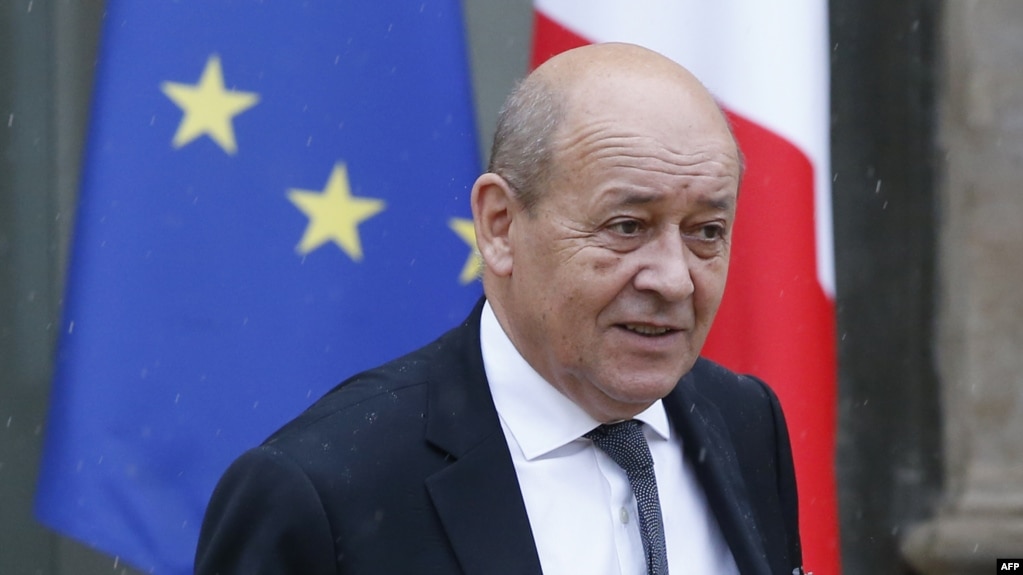
Le Drian (France). Jean-Yves Le Drian (French Foreign Minister) speaking to the French Parliament:
“The situation in the Middle East is explosive, violence is doing the talking, war could loom. We are committed to the security of Israel but Israel’s security cannot justify this level of violence… We [also] have a disagreement about the method. Because in both cases [including Jerusalem embassy] the United States decided to act unilaterally. ” (Amanda Holpuch and Matthew Weaver, “Gaza: Nakba Day protests as Palestinians bury those killed in embassy unrest – live updates”, The Guardian, 16 May 2018)
Levy (Israel). Gideon Levy (anti-racist Jewish Israeli writer for Haaretz ):
“When will the moment come in which the mass killing of Palestinians matters anything to the right? When will the moment come in which the massacre of civilians shocks at least the left-center? If 60 people slain don’t do it, perhaps 600? Will 6,000 jolt them? When will the moment come in which a pinch of human feeling arises, if only for a moment, toward the Palestinians? Sympathy? At what moment will someone call a halt, and suggest compassion, without being branded an eccentric or an Israel hater? When will there be a moment in which someone admits that the slaughterer has, after all, some responsibility for the slaughter, not only the slaughtered, who are of course responsible for their own slaughter? Sixty people killed didn’t matter to anyone – perhaps 600 would? How about 6,000? Will Israel find all the excuses and justifications then also? Will the blame be laid on the slain people and their “dispatchers” even then, and not a word of criticism, mea culpa, sorrow, pity or guilt will be heard?” (Gideon Levy, “60 dead in Gaza and the end of Israeli concscience”, Haaretz, 17 May 2018)
Luther (UK, Amnesty International). Philip Luther (Amnesty International, Research and Advocacy Director for the Middle East and North Africa):
“This is another horrific example of the Israeli military using excessive force and live ammunition in a totally deplorable way. This is a violation of international standards, in some instances committing what appear to be wilful killings constituting war crimes. Today’s footage from Gaza is extremely troubling, and as violence continues to spiral out of control, the Israeli authorities must immediately rein in the military to prevent the further loss of life and serious injuries. Only last month, Amnesty International called on the international community to stop the delivery of arms and military equipment to Israel. The rising toll of deaths and injuries today only serves to highlight the urgent need for an arms embargo. While some protestors may have engaged in some form of violence, this still does not justify the use of live ammunition. Under international law, firearms can only be used to protect against an imminent threat of death or serious injury.” ( Philip Luther, “Israel/OPT: use of excessive force in Gaza an abhorrent violation of international law”, Amnesty International, 14 May 2018)
Mabaya (South Africa). Ndivhuwo Mabaya (South African Department of International Relations spokesperson) re the indefinite recall of the South Africa Ambassador Sisa Ngombane in response to the latest 2018 Gaza Massacres (shades of the 1960 Sharpeville Massacre in Apartheid South Africa)(2018):
“Given the indiscriminate and gravity of the latest Israeli attack, the South African government has taken a decision to recall Ambassador Sisa Ngombane with immediate effect until further notice… [government condemned] in the strongest terms possible the latest act of violent aggression carried out by Israeli armed forces along the Gaza border. [This] led to the deaths of over 40 [people] killed following a peaceful protest against the provocative inauguration of the US embassy in Jerusalem… [Israeli Defence Force] must withdraw from the Gaza Strip and bring to an end the violent and destructive incursions into Palestinian territories. South Africa maintains further that the violence in the Gaza Strip will stand in the way of rebuilding Palestinian institutions and infrastructure.” (Kaveel Singh, “SA pulls ambassador out of Israel over Gaza violence”, News24, 14 May 2018.)
Macron (France). Emmanuel Macron (French President) in a statement to war criminal Netanyahu according to the Elysee Palace:
“He expressed his very deep concern about the situation in Gaza, condemned the violence and underlined the importance of protecting civilian populations and of the right to protest peacefully.” (“France’s Macron tells Netanyahu Palestinians have right to protest peacefully”, Reuters, 16 May 21081)
Maduro (Venezuela). Nicolas Maduro (President of Venezuela that cut diplomatic relations with Apartheid Israel during the 2009 Gaza Massacre):
“Today we are all Palestine. Their dead, injured and hopes are ours. We condemn atrocity and measures taken by US and Israel. Long live Palestine! Long live a free and independent Palestine!” (Federico Fuentes, “South America: Israel’s massacre in Gaza denounced, support for BDS grows”, Green Left Weekly, 17 May 2018)
Mansour (Palestine). Riyad Mansour (ambassador of the permanent observer mission of the State of Palestine to the UN):
“We condemn in the strongest terms this odious massacre committed by Israel occupation forces… [Israeli] occupation is the main source of violence in the region, for those who do not acknowledge it live in a different reality. Let us investigate what’s happening on the ground… Palestinians will accept the findings come what may…. [US embassy move to Jerusalem] provocation… [Trump allows Israel to] commit more crimes against the Palestinian people [with] impunity… [The US] should not close their eyes to situation on the ground.” (Amanda Holpuch and Matthew Weaver, “Gaza: Nakba Day protests as Palestinians bury those killed in embassy unrest – live updates”, The Guardian, 16 May 2018)
McGoldrick (Ireland, UN). Jamie McGoldrick (UN Humanitarian Coordinator, Occupied Palestinian Territory) (18 May 2018):
“The situation in Gaza is devastating and the crisis is far from over. For every person killed and injured this week and those before, there is a family and a network of friends affected.” (UN Office for the Coordination of Humanitarian Affairs (OCHA), Occupied Palestinian Territory, “50 Palestinians reported injured during demonstrations in Gaza on first Friday of Ramadan”, 18 May 2018)
Mondoweiss (US). Mondoweiss (a news website that is co-edited by anti-racist Jewish American journalists Philip Weiss and Adam Horowitz and is a part of the Center for Economic Research and Social Change) on Gaza killings (14 May 2014):
“Today is unfolding as a horrifying and tragic day in Palestine. The Israeli military has opened fire on Gaza protesters as the U.S. and Israeli governments prepare to mark the move of the U.S. embassy to Jerusalem. Today has been the deadliest day in Gaza since the end of Operation Protective Edge in 2014. According to the Gaza Ministry of Health (as of 21:00 GMT): 58 killed, including 7 minors and 1 paramedic; 2,771 injured – including 225 minors, 11 journalists, 17 paramedics; 130 in serious and critical condition; 1,359 shot by Israeli soldiers using live Israeli ammunition. Since the beginning of the Great March of Return on March 30th, 107 Palestinians have been killed, almost 3,400 protesters have been shot with live ammunition, and almost 13,000 injured.” (“Live blog: massacre in Gaza as US and Israel celebrate embassy move to Jerusalem”, Mondoweiss, 14 May 2018)
Moorehead (UK). Jennifer Moorehead (Save the Children’s Country Director for the Occupied Palestinian Territory): “All parties must ensure that children are protected in accordance with the Geneva Conventions and other relevant international law. We are deeply concerned by the high number of children who have been hit by live ammunition and we agree with the High Commissioner for Human Rights that this could suggest an excessive use of force and may amount to unlawful killing and maiming, We support the UN Secretary General’s call for independent investigations to be carried out and any perpetrators to be held to account. We strongly urge all protests to remain peaceful, and call on all sides to tackle the long-term causes of this conflict and promote dignity and security for both Israelis and Palestinians…Gaza has been under an Israeli air, sea and land blockade for more than 10 years and has suffered three wars from which it has never fully recovered. This has meant an already very difficult humanitarian situation in Gaza has gone from bad to worse with almost every aspect of life – from employment, education and electricity to health and sanitation – being negatively impacted. The result has been devastating for the children of Gaza – physically and psychologically. Many have been injured, and many more have seen their parents or loved ones either hurt at the protests, or suffering increasing hardship in their daily lives. Save the Children is deeply concerned at the prospect of further violence and we fear that even more children could be injured or lose their lives. Children and families are telling our staff that they are losing hope of conditions ever improving in Gaza. We’re calling for an urgent lifting of the Israeli blockade that has crippled the economy and for increased donor engagement to alleviate the urgent daily needs of almost two million people in Gaza.” (Save the Children, “More than 250-children in Gaza shot with live ammunition as protests escalate” Save the Children, 11 May 2018)
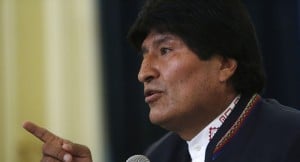
Morales (Bolivia). Evo Morales (President of Bolivia that cut diplomatic relations with Apartheid Israel during the 2009 Gaza Massacre ): “Strongly condemned” the brutal Israeli crackdown on Gaza protesters, tweeting on May 15: “Bolivia condemns the genocidal reaction of the Israeli army that slaughters Palestinian brothers in cold blood. More than 50 dead, 2000 injured in protest against arbitrary transfer of US Embassy to Jerusalem. Bolivia rejects and strongly condemns the opening of the US Embassy in Jerusalem. Again, the US violates international law and covers the crimes of the state of Israel. #PalestinaLibre.” (Federico Fuentes, “South America: Israel’s massacre in Gaza denounced, support for BDS grows”, Green Left Weekly, 17 May 2018)
Palestinian Campaign for the Academic and Cultural Boycott of Israel (PACBI) (Palestine). Palestinian Campaign for the Academic and Cultural Boycott of Israel (PACBI) re a football boycott of Apartheid Israel :
“Dear Lionel Messi and Argentina National Football Team, We urge you to cancel your friendly match with Israel, scheduled for June 9, 2018, due to Israel’s long record of human rights abuses, on and off the field. Israel arrests, harasses and kills Palestinian players. It destroys Palestinian stadiums and denies Palestinian footballers the right to travel to play. And, Israeli football leagues include clubs based in illegal Israeli settlements built on stolen Palestinian land . Israeli snipers killed more than 40 unarmed Palestinians in Gaza and injured thousands. Mohammed Khalil, a Palestinian footballer who was demonstrating with thousands for their basic human rights, was shot by a sniper in both legs, ending his football career. This is not the first time Israeli bullets have ended Palestinians’ football careers. And, it won’t be the last under Israel’s violent regime of occupation and apartheid. Messi, your game with Israel is political. The Israeli government will use it to cover-up its brutal attacks on Palestinians, on and off the field. There is nothing “friendly” about military occupation and apartheid. Don’t play Israel until Palestinians’ human rights are respected. Don’t team up with Israeli apartheid!” (Palestinian Campaign for the Academic and Cultural Boycott of Israel (PACBI), “Tell Argentina and Lionel Messi: there is #NothingFriendly abpout Israel shooting Palestinian footballers”, BDS, 15 May 2018).
Polya (Australia). Dr Gideon Polya (anti-racist Jewish Australian scientist, writer, artist and humanitarian activist):
“Pro-Apartheid Trump America and US lackey Australia merit international Boycotts, Divestment and Sanctions (BDS) as the only countries to vote against the UN Human Rights Council’s resolution to formally investigate the latest Israeli Gaza Massacres in which Apartheid Israeli soldiers have shot [and killed] 116 unarmed Palestinian protestors and injured about 13,000. No Israeli soldiers have been killed or wounded and no Palestinians protestors penetrated the barbed wire surrounding the Gaza Concentration Camp. Just as a galvanized world successfully boycotted Apartheid South Africa after the 1960 Sharpeville Massacre (69 unarmed African protestors killed and 220 wounded), so the world must respond to the latest Gaza Massacres with BDS against Apartheid Israel and all people and countries supporting this genocidally racist obscenity.” (Polya, “Boycott Pro-Apartheid US & Australia For Backing Israeli Gaza Massacres, Apartheid, Theft & Palestinian Genocide”, Countercurrents, 22 May 2018).
Riemer (Australia). Dr Nick Riemer (Australian literature and linguistics academic):
“Australia, Israel’s best friend. On his visit to Australia in 2017, Netanyahu said that ‘there is no better friend [than Australia] for the state of Israel’. He wasn’t greatly exaggerating. The UN committee that drafted the 1947 Partition resolution creating Israel was chaired by an Australian, HV Evatt, as local politicians often remind us. A glance at Australia’s recent UN voting record speaks volumes about Australia’s position on the “extreme fringe” of world opinion on Israel. In a 2012 vote making Palestine a UN non-member state, we abstained. In 2013, when a record 162 countries called for a stop to “all Israeli settlement activities in all of the occupied territories” and condemned any attempts to desecrate the Al-Aqsa Mosque, we abstained. We even voted against a UN resolution declaring the following year, 2014, the International Year of Solidarity with the Palestinian People. Faced with a proposal in the UN Security Council demanding Israel end the occupation of Palestinian territories within two years, we abstained. At the same time, the Abbott government took the extraordinary step of ruling out using the term ‘occupied’ when describing Israeli settlements in East Jerusalem. In 2016, Australia indicated it didn’t support the UN Security Council resolution condemning the construction and expansion of settlements. Last year, when the UN passed a resolution in December condemning the projected move of the US embassy to Jerusalem, we abstained. Protests are necessary, but they can seem a weak gesture in the face of the carnage on the Gaza boundary. Since the first Great Return March a month and a half ago, around ninety people have been killed by IDF snipers. The victims include at least two journalists and five children. As of midnight Sydney time on Monday, no less than 40 protesters had been killed, and over 900 injured in Gaza on that day alone. … Israel’s actions have been documented and denounced by organisations like Medicins Sans Frontiere and Human Rights Watch. Yet, true to form, Western leaders, Australia’s included, have stayed eloquently silent. That silence expresses better than words the moral bankruptcy over Israel that has long been normalised within the Western ruling class. The US lobby group Jewish Voice for Peace recently took out newspaper advertisements noting that as of May 10, only 21 out of 535 members of Congress had spoken out against Israeli brutality during the Great March of Return protests.” (Nick Riemer, “Nakba Day: The Palestinian slaughter goes on but the path to peace is still possible”, New Matilda, 15 May 2018)
Sanders (US). Senator Bernie Sanders (I-Vt.) issued the following statement after more than 50 Palestinians were killed and 2,200 wounded by Israeli troops along the border fence with Gaza on Monday, 14 May 2018:
“More than 50 killed in Gaza today and 2,000 wounded, on top of the 41 killed and more than 9,000 wounded over the past weeks. This is a staggering toll. Hamas violence does not justify Israel firing on unarmed protesters. The United States must play an aggressive role in bringing Israel, the Palestinian Authority, Egypt and the international community together to address Gaza’s humanitarian crisis and stop this escalating violence. ” (“Sanders statement on Gaza violence”, Bernie Sanders, 14 May 2018)
Save the Children (International NGO). Save the Children (an iconic, international, child-saving NGO):
“Hundreds of children, some as young as eight years old, have been shot by live ammunition in the Gaza protests, an analysis by Save the Children has shown. Out of more than 500 detailed injuries in children, at least 250 (some 50 percent) were hit with live bullets, according to data collected by the Palestinian Ministry of Health in Gaza, which is also being used by the United Nations in its reporting. The true number could be even higher. The Ministry have reported that so far 689 children have been injured, however the details of these injuries have not yet been revealed. Almost 8,000 people, including almost 700 children, have been injured in protests since 30 March. This includes 4,150 people (52 per cent) who were hospitalized and 2,017 (25 per cent) were shot with live ammunition. There have been no reported injuries on the Israeli side.” (Save the Children, “More than 250-children in Gaza shot with live ammunition as protests escalate” Save the Children, 11 May 2018)
Shakir (US, Human Rights Watch). Omar Shakir (Israel and Palestine Director , Human Rights Watch):
“As hundreds gathered Monday in Jerusalem to celebrate the move of the U.S. Embassy, about 100 kilometers away, Israeli forces fired on Palestinian demonstrators protected by the fence separating Israel from Gaza. They killed 60 people and injured well over 1,000 with live fire, according to Gaza’s Health Ministry. Israeli forces have shot dead over 100 Palestinians in demonstrations in Gaza since March 30, including 14 children, and injured over 3,500 with live fire. These staggering casualty levels are neither the result of justifiable force nor of isolated abuses; but foreseeable results of senior Israeli officials’ orders on the use of force… Bloodshed on this scale results directly from these open-fire orders that green-light the firing on demonstrators irrespective of the threat they pose, along with Israel’s decades-long failure to hold accountable soldiers who violate their already lax open-fire orders. As criticism of this predictable bloodbath pours in from leaders around the world, the Trump administration is blaming Hamas alone, giving Israel a green light to continue killing and maiming.” ( Omar Shakir, “Israeli open-fire orders predictably result in bloodbath” and “Breaking: @hrw [Human Rights Watch] reacts to Israel’s gunning down of dozens of Palestinian protestors in Gaza today.” (Human Rights Watch, 15 May 2018; Omar Shakir, Twitter, 15 May 2018.)
Shehada (Palestine). Muhammad Shehada (Palestinian Gaza writer and activist):
“The point is that people are trying to undertake a mass jailbreak out of what David Cameron, the prime minister of—the former prime minister of Britain, called an “open-air prison,” what a Haaretz editorial calls a “Palestinian ghetto,” and what Israeli distinguished scholar Baruch Kimmerling calls “the largest concentration camp ever to exist. Then you have the call for return, which is the main theme of the protest. And that represents even deeper and deeper desperation amongst the masses. The call for return does not constitute, what Israel claims, an attempt to destroy the state of Israel, but it rather shows that Gazans have given up about the place where they are caged … For the mass protest, the main target or goal is basically finding life. People’s livelihood has been completely destroyed behind the fence. Their future is glittering, literally, after the fence, if they manage to break out of Gaza. Although, virtually, these are waiting, they are no longer prisoners. And that’s exactly what they want. The separation fence is a window for the people of Gaza to always stare at Israelis on the other side leading a normal and organized life. This window does not awaken only jealousy, but also extreme anger and outrage. For how come on Earth that the entire world is watching 2 million people chained to the ground, dying slowly, and doing absolutely nothing?… when Jared was saying that the people in Gaza who are marching and risking their lives and walking towards death bare-chested are part of the problem, not the solution. Then what’s the solution, in his head? Just exterminating the entire population.” (“Gazan writer: protesters are seeking freedom from the world’s largest concentration camp”, Democracy Now, 15 May 2018)
Shorten (Australia). Bill Shorten (Australian Labor Opposition Leader) on the latest Gaza Massacres:
“I think it is dreadful what we’ve seen . In particular when you see the death of children. No good comes of that. No good comes from that at all. That’s a disaster. We are urging restraint from Israel. We also support a 2 state solution and we believe that aggression by any party puts back the cause of peace and doesn’t promote it.” (“Malcolm Turnbull blames Hamas for “tragic” Gaza deaths”, Sky News, 15 May 2018)
Singh (Canada). Jagmeet Singh (Leader of the National Democratic Party, NDP, of Canada):
“Our government has been shamefully silent on recent developments in Gaza, and the prime minister should condemn the violence, call on Israel to cease violations of international law, and support an independent investigation into these deaths… [Canada must] call on the government of Israel to end this occupation. Illegal killings, arbitrary and abusive detention, forced displacement, restrictions on movement, the expansion of illegal settlements, collective punishment and institutionalized discrimination have characterized this occupation that has persisted for over half a century.” (Peter Zimonjic, “Freeland calls on “all parties” involved in Gaza violence to protect civilians””, CBC News, 14 May 2018)
South Africa. South Africa’s Department of International Relations in a statement on the Gaza killings (noting that South Africa withdrew its ambassador to Apartheid Israel) :
“The South African government condemns in the strongest terms possible the latest act of violent aggression carried out by Israeli armed forces along the Gaza border, which has led to the deaths of over 40 civilians. The victims were taking part in a peaceful protest against the provocative inauguration of the U.S. embassy in Jerusalem. This latest attack has resulted in scores of other Palestinian citizens reported injured, and the wanton destruction of property.” ( “Live blog: massacre in Gaza as US and Israel celebrate embassy move to Jerusalem”, Mondoweiss, 14 May 2018)
Stein (US). Dr Jill Stein (Green Party 2016 candidate for President, anti-racist Jewish American activist, medical doctor, and environmental health advocate.):
“ Israel killing scores of Palestinian protesters in Gaza isn’t a “clash”, it’s a massacre. A US-backed massacre of an occupied people crying out for their human rights. The occupation of Palestine is an atrocity. Stop $10 million/day US support for Israeli military NOW.” (Dr Jill Stein, Twitter, 15 May 2018)
Taylor (UK, EU MEP). Keith Taylor (Member of the European Parliament (MEP), Green party, South East England):
“In the face of the bloodshed in Gaza, too many in the west have been quick to minimise or even excuse the state-sanctioned murder of unarmed protesters. The White House labelled the innocent lives lost at the hands of Israeli troops as “part of the problem”, as it celebrated its embassy move. The UK government and Labour Friends of Israel blamed the unarmed Palestinian people for daring to protest against their repression and raised the spectre of Hamas. Greens will continue to support the ideals of freedom, equality and respect for international law. And that includes supporting Palestinian people marking the Nakba by protesting against their illegal oppressors. We support a two-state solution but, with Netanyahu being appeased by the west at every turn, this has never seemed so far away.” (Letters, “The Guardian”, 16 May 2018)
Thornberry (UK). Emily Thornberry (UK Labour Opposition Shadow Foreign Secretary) re Gaza killings:
“[Condemned the Israeli government for] brutal, lethal and entirely unjustified actions on the Gazan border… These actions are made all the worse because they come not as the result of a disproportionate over-reaction to one day’s protests, but as a culmination of six weeks of an apparently systemic and deliberate policy of killing and maiming unarmed protestors and bystanders who pose no threat to the forces at the Gaza border, many of them shot in the back … and many of them children” and “Yesterday’s horrific massacre at the Gaza border left at least 58 dead and almost 3,000 injured. Our first thoughts today are with those Palestinians who are mourning their loved ones or waking up with life-changing injuries. What makes yesterday’s events all the worse is that they came not as the result of some accidental overreaction to one day’s protests but as the culmination of six weeks of an apparently calculated and deliberate policy to kill and maim unarmed protestors who posed no threat to the forces on the Gaza border. Many of them were shot in the back, many of them were shot hundreds of metres from the border and many of them were children. If we are in any doubt about the lethal intent of the Israeli snipers working on the border, we need only look at the wounds suffered by their victims. American hunting websites regularly debate the merits of 7.6 mm bullets versus 5.5 mm bullets. The latter, they say, are effective when wanting to wound multiple internal organs, while the former are preferred by some because they are “designed to mushroom and fragment, to do maximum internal damage to the animal.” It is alleged that this was the ammunition used in Gaza yesterday against men, women and children.” (Lee Harpin, “Deaths in Gaza are an “outrage” says Jeremy Corbyn as he backs review of arms sales to Israel”, The JC, 15 May 2018 and House of Commons Hansard, Gaza border violence, 15 May 2018)
Trudeau (Canada). Justin Trudeau:
“Canada deplores and is gravely concerned by the violence in the Gaza Strip that has led to a tragic loss of life and injured countless people. We are appalled that Dr. Tarek Loubani, a Canadian citizen, is among the wounded – along with so many unarmed people, including civilians, members of the media, first responders, and children. We are doing everything we can to assist Dr. Loubani and his family, and to determine how a Canadian citizen came to be injured. We are engaging with Israeli officials to get to the bottom of these events… Reported use of excessive force and live ammunition is inexcusable. It is imperative we establish the facts of what is happening in Gaza. Canada calls for an immediate independent investigation.” (John Paul Tasker, “Trudeau calling for independent probe of reported use of “excessive force” in Gaza shootings”, CBC News, 16 May 2018)
Turkey. Turkey withdrew its ambassador to Apartheid Israel.
UN Human Rights Council. UN Human Rights Council (the UN’s top human rights body) has voted to send a team of international war crimes investigators to probe the killing and wounding of Gaza protesters by Israeli forces. UN Human Rights Council Resolution on Gaza Massacres:
“[to] urgently dispatch an independent, international commission of inquiry… [It must] investigate all alleged violations and abuses … in the context of the military assaults on large-scale civilian protests that began on 30 March 2018” (29 members voted Yes, US and Australia voted No, 14 countries Abstained, and 2 countries Did Not Register). The 29 countries voting Yes: Afghanistan, Angola, Belgium, Brazil, Burundi, Chile, China, Cote D’Ivoire, Cuba, Democratic Republic of Congo, Ecuador, Egypt, Iraq, Kyrgyzstan, Mexico, Nepal, Nigeria, Pakistan, Peru, Philippines, Qatar, Saudi Arabia, Senegal, Slovenia, South Africa, Spain, Tunisia, United Arab Emirates, and Venezuela; 2 countries voting No: Australia and the United States of America; 14 countries Abstaining: Croatia, Ethiopia, Georgia, Germany, Hungary, Japan, Kenya, Panama, Republic of Korea, Rwanda, Slovakia, Switzerland, Togo, and United Kingdom; and 2 countries which Did Not Register: Mongolia and Ukraine. In addition, 10 of the council’s 15 members wrote to UN secretary-general to express serious concern that the 2016 UNSC Resolution 2334 demanding an end to Israeli settlement building on occupied land was not being implemented: “The Security Council must stand behind its resolutions and ensure they have meaning; otherwise, we risk undermining the credibility of the international system,” wrote Bolivia, China, Ivory Coast, Equatorial Guinea, France, Kazakhstan, Kuwait, the Netherlands, Peru and Sweden in a joint letter (“UN votes to send war crimes investigators to Gaza”, Al Jazeera, 19 May 2018)
UN Office for the Coordination of Humanitarian Affairs (OCHA). UN Office for the Coordination of Humanitarian Affairs (OCHA), Occupied Palestinian Territory:
“Today, as of 20:00, Israeli forces injured 56 Palestinians in Gaza, according to the Palestinian Ministry of Health (MoH), during demonstrations near the perimeter fence as part of the “Great March of Return.” Although 15 May, the 70th anniversary of what Palestinians refer to as the 1948 “Nakba”, was initially intended to be the culmination of the protests, the demonstrations are now expected to continue at least until 5 June, which commemorates the “Naksa”, when Israel captured the West Bank and Gaza Strip in 1967… Since the first protest on 30 March, according to the MoH in Gaza, Israeli forces have killed 104 Palestinians, including 14 children, during the course of the “Great March of Return” demonstrations. In addition, 12 Palestinians have been killed during the same period in other circumstances, including five reportedly shot at the fence or after crossing into Israel, whose bodies are reportedly being withheld by the Israeli authorities. The cumulative number of injuries by Israeli forces is approximately 12,600, of whom 55 per cent have been hospitalized. One Israeli soldier has been injured. The violence reached a peak on 14 May, coinciding with the official transfer of the U.S. Embassy from Tel Aviv to Jerusalem, when Israeli forces killed approximately 60 Palestinians and injured over 2,700 in Gaza, the highest casualty toll in the Gaza Strip in a single day since the 2014 hostilities… In the context of the massive rise in Palestinian casualties since 30 March, the humanitarian response in Gaza has been focusing on providing immediate life-saving healthcare, mental health and psycho-social support for affected people, especially children, and monitoring, verifying and documenting possible protection violations. These new needs occur in the context of a pre-existing humanitarian and human rights crisis caused by nearly 11 years of Israeli blockade, alongside the internal Palestinian political divide and a chronic energy crisis that leaves Gaza’s two million inhabitants with power cuts of up to 22 hours per day, on average, and severely disrupts the provision of essential services.” (UN Office for the Coordination of Humanitarian Affairs (OCHA), Occupied Palestinian Territory, “50 Palestinians reported injured during demonstrations in Gaza on first Friday of Ramadan”, 18 May 2018)
UN Security Council members. Draft resolution for the UNSC meeting called for by Kuwait re the Gaza killings:
“The Security Council expresses its outrage and sorrow at the killing of Palestinian civilians exercising their right to peaceful protest. The Security Council calls for an independent and transparent investigation into these actions to ensure accountability…all sides to exercise restraint with a view to averting further escalation and establishing calm… [actions] which purport to have altered the character, status or demographic composition of the Holy City of Jerusalem have no legal effect” . US opposition effectively vetoed passage of the resolution. (Chris Baynes, “US “blocks UN motion” calling for investigation into Israeli killing of Gaza protesters”, Independent, 15 May 2018)
Varadkar (Ireland). Taoiseach Leo Varadkar (Ireland’s Taoiseach or Prime Minister, Minister for Defence and Leader of Fine Gael):
“Live ammunition is not a tool to be used for crowd control. The Government will not be expelling the ambassador. In recent decades Ireland has never expelled an ambassador. Any country is entitled to defend its border but the use of force must be proportionate… Ireland’s embassy will remain in Tel Aviv.” (Fiach Kelly, “Dail divided on response to violence on Israel-Gaza border””, Irish Times, 16 May 2018).
Venezuela. Venezuela Foreign Ministry:
“[Venezuela’s] ongoing support for the just cause of the Palestinian people and their right to return to the lands that have historically belonged to them… [Venezuela’s] disapproval of the ongoing actions taken by the US government with the Israeli occupying force. These measures are illegal, contrary to international law, and run contrary to all international resolutions regarding this conflict, thus undermining the efforts to find a peaceful and just solution for the return of the heroic Palestinian people to their land.” (Federico Fuentes, “South America: Israel’s massacre in Gaza denounced, support for BDS grows”, Green Left Weekly, 17 May 2018)
Vlazna (Australia). Dr Vacy Vazna (Australian humanitarian activist and writer) :
“All the above criteria for sanctions (and more) apply to the Jewish state’s military occupation and control of Palestinian lives over the past 70 years and apply to its blatant belligerence during the past month against Gaza’s unarmed protestors that has culminated, to date, in 46 martyrs and over 6000 injuries that began with the Good Friday massacre. The killings and maiming are indisputable evidence of the violation of International Law and International Humanitarian Law ( IHL) which prohibits under Rule 70 ,“The use of means and methods of warfare which are of a nature to cause superfluous injury or unnecessary suffering… Article 6 of the ATT [UN Arms Trade Treaty] provides a solid legal structure and obligations for arms embargoes, “Article 6: 3. A State Party shall not authorize any transfer of conventional arms covered under Article 2 (1) or of items covered under Article 3 or Article 4, if it has knowledge at the time of authorization that the arms or items would be used in the commission of genocide, crimes against humanity, grave breaches of the Geneva Conventions of 1949, attacks directed against civilian objects or civilians protected as such, or other war crimes as defined by international agreements to which it is a Party”. 94 countries have ratified the ATT. We can demand that our governments honour their obligations and end arms trade with Israel and lobby our governments to support a UN arms embargo. It is the least we can do. ATT campaigns will erase any sense of bystander helplessness in the face of the Jewish state’s slaughter and maiming of brave young Gazans who are simply demanding their Right of Return under international law.” (Vacy Vlazna, “Calls for arms grade embargo against Jewish State atrocities in Gaza”, Justice for Palestine Matters)
Weiss (US). Philip Weiss (see “Mondoweiss” , an American news website that is co-edited by anti-racist Jewish American journalists Philip Weiss and Adam Horowitz and is a part of the Center for Economic Research and Social Change).
Whitson (US, Human Rights Watch). Sarah Leah Whitson (Executive Director, Middle East and North Africa , Human Rights Watch):
“Israel has killed 37 Palestinians in Gaza today, & day’s not even over. This is about individual snipers safely esconced hundreds of feet, even farther, away, targeting individual protestors and executing them one at a time. So inhumane.” (Sarah Leah Whitson, Twitter, 14 May 2018)
Zomlot (Palestine). Hussar Zomlot (Palestinian Ambassador to the US):
“The US silence is license to kill for Israel, and Israel is taking this license to her and implementing it in full. Failing to speak up is a dent in the moral history of this country” and re the US Embassy shift to Jerusalem: “Today will go down in history as the day the U.S. encouraged Israel to cross the line towards what numerous U.S. and international leaders have been warning from: A full-fledged apartheid. The reality has evolved into a system of privileging one group and continuing to deny the human and national rights, all granted by international law, of over 12 million Palestinians.” (Caitlin Doherty, “”Israel has right to defend itself” – Donald Trump blames Hamas for Gaza deaths”, Express, 15 May 2018; “Live blog: massacre in Gaza as US and Israel celebrate embassy move to Jerusalem”, Mondoweiss, 14 May 2018)
(B) Bad, offensive or deficient responses to the US Jerusalem move and the latest Gaza Massacres – a compendium of shameful complicity.
Abbott (Australia). Tony Abbott (former Prime Minister of Australia betrayed and replaced as PM by Malcolm Turnbull) supporting the US Embassy move:
“The US embassy is now in West Jerusalem, which has been Israel’s capital for nearly 70 years. Australia should consider following Trump’s move” [ noting that Apartheid Israel has war criminally incorporated East Jerusalem and its Indigenous Palestinian inhabitants into a forcibly and war criminally unified Jerusalem and into Apartheid Israel in gross violation of numerous UN Resolutions, the UN Charter, the UN Genocide Convention and the Geneva Convention; the violently incorporated Indigenous Palestinians cannot vote in Israeli elections ]. (Primrose Riordan , “Turnbull, US blame Hamas for death of Palestinians in Gaza”, The Australian, 16 May 2018; Gideon Polya, “Apartheid Israel & Pro-Apartheid US, Australia & Canada face world sanctions over East Jerusalem”, Countercurrents, 20 December 2017)
Ambassadors to Apartheid Israel. Of 83 countries with embassies in Apartheid Israel and invited to the celebrations only 33 attended, namely Albania, Angola, Austria, Cameroon, Congo, the Democratic Republic of the Congo, Ivory Coast, Czech Republic, Dominican Republic, El Salvador, Ethiopia, Georgia, Guatemala, Honduras, Hungary, Kenya, Macedonia, Burma, Nigeria, Panama, Peru, the Philippines, Romania, Rwanda, Serbia, South Sudan, Thailand, Ukraine, United States, Vietnam, Paraguay, Tanzania and Zambia (Noa Landau, “These are the countries planning to participate in Israel’s celebrations of U.S. Embassy move”, Haaretz, 16 May 2016)
Australia. US lackey Australia and the US voted No to the UN Human Rights Council Resolution on Gaza Massacres “[to] urgently dispatch an independent, international commission of inquiry… [It must] investigate all alleged violations and abuses … in the context of the military assaults on large-scale civilian protests that began on 30 March 2018.” ( “UN votes to send war crimes investigators to Gaza”, Al Jazeera, 19 May 2018).
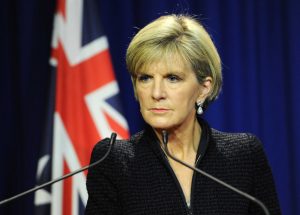
Bishop (Australia). Julie Bishop (Coalition Australian Foreign Minister) released the following detailed statement after the latest series of Israeli Gaza Massacres that was entitled “Palestinian protests in Gaza” (2018):
“The Australian Government expresses its deep regret and sadness over the loss of life and injury during the continuing protests in Gaza. We recognise that Israel has legitimate security concerns and needs to protect its population, and we call on Israel to be proportionate in its response and refrain from excessive use of force. Australia urges Palestinian protesters to refrain from violence and attempting to enter into Israeli territory during the March of Return. The violence underlines the importance of a return to negotiations toward a two-state solution so an enduring peace can be found. The Australian Government is committed to a future where Israel and a Palestinian state exist side-by-side in peace and security, within internationally recognised borders”, “Australia voted against the [UN Human Rights Council] resolution because of our principled opposition to resolutions that fail the test of balance and impartiality. The UNHRC resolution prejudged the outcome of an inquiry into violations of international law in the context of large-scale civilian protests in the Palestinian Territories, including East Jerusalem. Nor did it refer to the role of Hamas in inciting violent protests” and “Clearly there have been tensions building for some time and Israel believes that Hamas is the instigator behind the protests. The protestors are resorting to violence, they are trying to force entry into the Israeli territories, and we have urged them not to do that. Israel is of course entitled to defend itself, a legitimate right to self-defence, but it must be proportionate and we urge Israel not to use excessive force. The issue of the US Embassy has just escalated the tensions. We are urging all sides to reduce the violence, cut out the violence and return to negotiations. I think the violence underscores the desperate need for both sides to return to peaceful negotiations for a two-state solution” ( Julie Bishop, “Palestinian protests in Gaza”, Media release, 15 May 2018; “We can hold head high”, Australian Jewish News, 24 May 2018; Julie Bishop, “Interview with Leigh Sales – ABC 7.30”, 15 May 2018)
Block (Australia). Anton Block (Executive Council of Australian Jewry president):
“The Foreign Minister was correct in rejecting the terms of the resolution which pre-empted the outcome of the inquiry, accusing Israel of ‘impunity’, ‘systematic failures’, and ‘intentionally targeting civilians’. The whole exercise is a polemical stunt to give the appearance of legitimacy and objectivity to blatantly one-sided political attacks on Israel.” (“We can hold head high”, Australian Jewish News, 24 May 2018).
Burt (UK). Alistair Burt (UK Minister for the Middle East):
“[Palestinian death toll] extremely worrying… [ Israel should] show greater restraint… [UK would] not waver from our support for Israel’s right to defend its borders” [51]. Alistair Burt issued a statement on Twitter: “Extremely saddened by loss of life in Gaza today. Concerned peaceful protests are being exploited by extremist elements. Urge restraint in use of live fire. Violence is destructive to peace efforts. UK remains committed to a two-state solution with Jerusalem as a shared capital.” (Lee Harpin, “Deaths in Gaza are an “outrage” says Jeremy Corbyn as he backs review of arms sales to Israel”, The JC, 15 May 2018)
Collins (Australia). Julie Collins ( Tasmanian Labor MP and Shadow Minister for Ageing and Mental Health):
“Well, I think the whole…the deaths recently was a bit of a tragedy and, you know, I think the arguments that we’re hearing here tonight at the table show how complex an issue this is. I mean, Labor yesterday called for the government to explain its vote in the UN. We were very concerned that we were one of only two countries to actually vote against it. As we’ve heard, some countries did abstain. But the question would be, well, why didn’t Australia abstain? Why didn’t we talk about, perhaps, supporting another investigation with a differently-worded motion? I mean, we’re not in government, we don’t know what the negotiations around that were. But, clearly, I think both sides, if there was an investigation, would welcome it, so that we can actually get to the bottom of what happened. Let’s not forget, 60 people died. I mean, it is heartbreaking that this continues to happen. This conflict has been going on for a long time. A two-state solution is the only solution, and we need to de-escalate things, not keep inflaming them.” (ABC Q&A, “Weddings, Gaza and losing faith”, 21 May 2018)
Conricus (Israel). Lt Col Jonathan Conricus (a spokesperson for the genocidally racist and war criminal IDF):
“[Since 30 March] only 1 soldier slightly wounded by shrapnel…[no Palestinian incursion] Our troops have not taken any sustained direct fire” [58] (In stark contrast Mohammed Nabieh ( a descendant of refugees from a village near Israeli Ashdod) stated of the protest: “I’m here because of our land that we want back. We have nothing to lose,” Nobody cares about us. Why should we wait to die slowly?” (Oliver Holmes and Hazem Balousha, “Israel faces outcry over Gaza killings during Jerusalem embassy protests”, The Guardian, 15 May 2018)
Conservative Friends of Israel (CFI) (UK). Lord Polak CBE (CFI Honorary President) and James Gurd (CFI Executive Director) said:
“The ongoing events on the Israel-Gaza border are truly heart breaking, and the loss of lives deeply concerning. What makes the matter worse is Hamas’s cynical manipulation of a legitimate protest to further its well-documented violent and genocidal intentions towards Israeli citizens, which is deplorable. In the face of attempts to breach the border and attack civilians, Israel (like any other country) has the right to self-defence. We hope there will be no further casualties and we urge restraint on all sides.” ( Lee Harpin, “Deaths in Gaza are an “outrage” says Jeremy Corbyn as he backs review of arms sales to Israel”, The JC, 15 May 2018)
Danon (Israel). Danny Danon ( permanent representative of Apartheid Israel to the UN) addressing the UN Security Council:
“Hamas terrorists are hiding behind civilians during the riots. When it comes to the safety of the Israeli public, too often, the world is silent. The Palestinian leadership is using every ounce of its leadership to attack us and destroy us… [Palestinian authorities] killing their own people [and] playing a public relations game… [Palestinians] always choose violence. ” (Amanda Holpuch and Matthew Weaver, “Gaza: Nakba Day protests as Palestinians bury those killed in embassy unrest – live updates”, The Guardian, 16 May 2018) [Note that no Palestinians penetrated the Gaza Concentration Camp fence and no Israelis were killed or injured, with 1 Israel soldier being “slightly wounded by shrapnel”].
Dichter (Israel). Avi Dichter ( Likud chair of the Foreign Affairs and Defense committee of the Apartheid Israeli Knesset): “[Security forces] won’t let anyone put soldiers, and certainly not civilians, in danger,” he said.
“The IDF has enough bullets for everyone. I think that ultimately, the means that the IDF prepared, whether non-lethal, or if needed, lethal, in cases where it’s justified by the open-fire regulations — there’s enough ammunition for everyone.”(Avi Dichter quoted in Stuart Winer and Times of Israel Staff, “Israel “has enough bullets for everyone” senior MK says of deadly Gaza clashes”, The Times of Israel”, 14 May 2018)
Erdan (Israel). Gilad Erdan (Apartheid Israeli minister of Strategic Affairs):
“Israel does not wish to escalate and doesn’t want the death of residents of the Gaza Strip. Those who want this are solely the leadership of the Hamas terrorist organization, which uses a cynical and malicious use of bloodshed. The number of killed doesn’t indicate anything – just as the number of Nazis who died in the world war doesn’t make Nazism something you can explain or understand.” (“Live blog: massacre in Gaza as US and Israel celebrate embassy move to Jerusalem”, Mondoweiss, 14 May 2018)
Fleischer (Australia). Dr Tzvi Fleischer (editor of the Australia/Israel Review at the Australia/Israel & Jewish Affairs Council (AIJAC), PhD in International Politics from Monash University):
“The loss of 60 Palestinian lives along the Israel-Gaza border on Monday was indeed tragic and heartbreaking. Yet these deaths were not the result of anything resembling a peaceful protest, despite claims to the contrary; nor were they the result of either the difficult and worsening humanitarian situation in Gaza, or the opening of the new US embassy in Jerusalem. Instead, they were yet another product of the often divided Palestinian leadership, which has cost the Palestinian people so much. Hamas, which has ruled Gaza with an iron fist for 11 years has become increasingly isolated. It has also been locked in a very bitter political struggle with the Palestinian Authority, which rules the West Bank and has far more international recognition. Furthermore, Hamas’ traditional methods of gaining attention both internationally and on the Palestinian streets – launching suicide bombings and rocket attacks, or creating terror tunnels targeting Israel – have been closed off by Israeli counter-measures.” ( Tzvi Fleischer, “Gaza deaths a win for Hamas, but show Palestinian leadership failures”, Sydney Morning Herald, 17 May 2018)
Gurd (UK). Lord Polak CBE (CFI Honorary President) and James Gurd (CFI Executive Director) said:
“The ongoing events on the Israel-Gaza border are truly heart breaking, and the loss of lives deeply concerning. What makes the matter worse is Hamas’s cynical manipulation of a legitimate protest to further its well-documented violent and genocidal intentions towards Israeli citizens, which is deplorable. In the face of attempts to breach the border and attack civilians, Israel (like any other country) has the right to self-defence. We hope there will be no further casualties and we urge restraint on all sides.” (Lee Harpin, “Deaths in Gaza are an “outrage” says Jeremy Corbyn as he backs review of arms sales to Israel”, The JC, 15 May 2018)
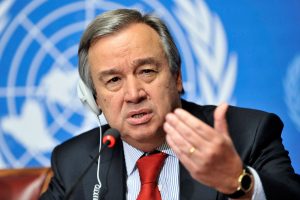
Guterres (Portugal, UN). António Guterres (UN Secretary-General via a Spokesman):
“The Secretary-General is deeply concerned about the clashes at the Gaza fence today between Palestinians participating in the “Great Return March” and Israeli Security Forces, which resulted in at least 15 deaths and a large number of injured. His thoughts are with the families of the victims. The Secretary-General calls for an independent and transparent investigation into these incidents. He also appeals to those concerned to refrain from any act that could lead to further casualties and in particular any measures that could place civilians in harm’s way. This tragedy underlines the urgency of revitalizing the peace process aiming at creating the conditions for a return to meaningful negotiations for a peaceful solution that will allow Palestinians and Israelis to live side by side peacefully and in security. The Secretary-General reaffirms the readiness of the United Nations to support these efforts.” (António Guterres (30 March 2018), “Secretary-General deeply concerned about deadly clashes along Israel-Gaza border, calls for independent investigation, restraint to prevent more casualties.” (UN, 30 March 2018)
Hastie (Australia). Andrew Hastie (former Special Forces soldier, Australian Liberal Party and Coalition Government backbencher and chairman of the parliamentary joint committee on intelligence and security) backed the call by former PM Tony Abbott for the Turnbull Liberal Party-National Party Coalition government to follow the US lead and move its embassy to Jerusalem. (Primrose Riordan , “Turnbull, US blame Hamas for death of Palestinians in Gaza”, The Australian, 16 May 2018)
Hume (Australia). Jane Hume (Australian Liberal Party Senator from Victoria):
“The reason why Australia voted against this inquiry was because we believed that it was already being prejudged, that the UN Human Rights Council had already prejudged the outcome. And you could tell that from its language. It didn’t include Hamas in any of the terms of reference of that inquiry. It only included Israel. It included not just Gaza, but also Jerusalem and the West Bank, which weren’t necessarily involved in this particular incident.” (ABC Q&A, “Weddings, Gaza and losing faith”, 21 May 2018)
Johnson (UK). Boris Johnson (UK Foreign Secretary): “There has got to be restraint in the use of live rounds.” (Primrose Riordan , “Turnbull, US blame Hamas for death of Palestinians in Gaza”, The Australian, 16 May 2018)
Kushner (US). Jared Kushner (Trump’s wealthy and fanatically Jewish Zionist son-in-law as husband of Ivanka Trump) (May 2018):
“As we have seen from the protests of the last month and even today those provoking violence are part of the problem and not part of the solution.” (Amanda Holpuch and Matthew Weaver, “Gaza: Nakba Day protests as Palestinians bury those killed in embassy unrest – live updates”, The Guardian, 16 May 2018)
Israeli Defence Force (IDF) (Israel). Israeli Defence Force (IDF) spokesperson:
“Yesterday we saw 30,000 people; we arrived prepared and with precise reinforcements. Nothing was cZArried out uncontrolled, everything was carried out uncontrolled; everything was accurate and measured, and we know where every bullet landed.” (Israeli Defence Force (IDF) spokesperson on Twitter, @IDFSpokesperson, 31 March 2018)
Labour Friends of Israel (UK). The UK Labour Friends of Israel group said:
“It is clear after yesterday’s terrible death toll that the violence on the Gazan border has to stop. Hamas must end its cynical exploitation of peaceful protests to launch attacks on Israel and we would urge the IDF to ensure they take all measures necessary to minimise civilian casualties and show restraint. ” ( Lee Harpin, “Deaths in Gaza are an “outrage” says Jeremy Corbyn as he backs review of arms sales to Israel”, The JC, 15 May 2018)
Lamm (Australia). Danny Lamm (Zionist Federation of Australia president):
[Thanks the Australian government] for taking a stand and for protecting Israel’s right to defend itself and not being railroaded by an organisation that has a miserable track record on human rights and calling out human rights failures. ” (“We can hold head high”, Australian Jewish News, 24 May 2018).
Leibler (Australia). Mark Leibler (Australia/Israel & Jewish Affairs Council chairman with executive director Colin Rubenstein:
“Australia can hold its head high as the only member state along with the US to oppose this biased and counterproductive [UN Human Rights Council] resolution. The government promised not to support one-sided resolutions when it recently joined the council and we commend the government for keeping its promise.” (“We can hold head high”, Australian Jewish News, 24 May 2018).
Liberman (Israel). Avigdor Liberman (Apartheid Israeli Defense Minister):
“This weekend hundreds of people were killed in Syria, including dozens of women and children, and I haven’t yet heard the UN secretary general, we didn’t see the Security Council or the Arab League convene, so we need to understand in what environment we are living. Dozens, maybe hundreds were also killed in Yemen, that doesn’t interest anyone at all. But when Israel defends itself we immediately see the spree of hypocrisy and the parade of foolishness. It has to be understood that there are no innocent people in Gaza. Everyone is affiliated with Hamas, they are all paid by Hamas, and all the activists trying to challenge us and breach the border are operatives of its military wing.” (Michael Bachner, “Liberman signals Trump didn’t consult with Israel on Syria withdrawal”, The Times of Israel, 8 April 2018)
May (UK). Theresa May (UK Prime Minister) via a spokesperson (May 2018):
“The UK remains firmly committed to a two-state solution with Jerusalem a shared capital. We are concerned by the reports of violence and loss of life in Gaza. We urge calm and restraint to avoid actions destructive to peace efforts.” (Caitlin Doherty, “”Israel has right to defend itself” – Donald Trump blames Hamas for Gaza deaths”, Express, 15 May 2018; Lee Harpin, “Deaths in Gaza are an “outrage” says Jeremy Corbyn as he backs review of arms sales to Israel”, The JC, 15 May 2018)
Merkel (Germany). Angela Merkel (German Chancellor) statement re the Gaza killings to war criminal Netanyahu as reported by a spokesman “[Expressed her] concerns about the escalation of violence… [understands] the security concerns of Israel… The right to freedom of expression and peaceful assembly should not be abused to provoke unrest. Violence should not be a means to enforce political goals. ” (Nadine Schmidt, “Merkel expresses concern over Gaza violence in call with Netanyahu”, CNN, 15 May 2018) [Under Merkel, Germany supplied German submarines to carry Israeli nuclear weapons-tipped missiles].
Netanyahu (Israel). Benjamin Netanyahu (serial war criminal Prime Minister of Apartheid Israel) blaming Hamas for the Gaza killings:
“Every country has an obligation to defend its borders. The Hamas terrorist organisation declares it intends to destroy Israel and sends thousands to breach the border fence in order to achieve this goal. We will continue to act with determination to protect our sovereignty and citizens” and [I salute] the soldiers of the IDF who keep us safe… from those who pretend to speak of human rights, while holding a Nazi flag. Here is the naked truth. They speak of human rights, but they really want to crush the Jewish state. We won’t let them. We’ll stand strong. We’ll keep our country safe.” (“Netanyahu explains Israel actions in Gaza by “obligation to defend its borders””, Sputnik , 14 May 2018; Michael Bachner, “Liberman signals Trump didn’t consult with Israel on Syria withdrawal”, The Times of Israel, 8 April 2018)
Polak (UK). CFI Honorary President Lord Polak CBE and CFI Executive Director James Gurd said:
“The ongoing events on the Israel-Gaza border are truly heart breaking, and the loss of lives deeply concerning.What makes the matter worse is Hamas’s cynical manipulation of a legitimate protest to further its well-documented violent and genocidal intentions towards Israeli citizens, which is deplorable. In the face of attempts to breach the border and attack civilians, Israel (like any other country) has the right to self-defence. We hope there will be no further casualties and we urge restraint on all sides. ” (Lee Harpin, “Deaths in Gaza are an “outrage” says Jeremy Corbyn as he backs review of arms sales to Israel”, The JC, 15 May 2018)
Pompeo (US). Mike Pompeo (US Secretary of State) re the Gaza Massacres “[The US] does believe the Israeli’s have the right to defend themselves and we’re fully supportive of that.” (Caitlin Doherty, “”Israel has right to defend itself” – Donald Trump blames Hamas for Gaza deaths”, Express, 15 May 2018)
Regev (Israel). Mark Regev (Australian Israeli and Israeli ambassador to the UK) defending the war criminal IDF response in the Gaza Massacres: “We used live fire in only a very measured way in a very surgical way.” (Lee Harpin, “Deaths in Gaza are an “outrage” says Jeremy Corbyn as he backs review of arms sales to Israel”, The JC, 15 May 2018)
Schechter (Israel). Aviva Raz Shechter (Israeli UN ambassador): “It is deplorable that this [UN Human Rights] council, which pretends to be interested in the truth, turns a blind eye to the reality on the ground, and unjustifiably condemns Israel for protecting its population.” (“We can hold head high”, Australian Jewish News, 24 May 2018).
Shah (US). Raj Shah (White House deputy press secretary) at news conference re Gaza killings (15 May 2018):
“We believe that Hamas is responsible for these tragic deaths, that their rather cynical exploitation of the situation is what’s leading to these deaths, and we want them to stop… We think that we shouldn’t lose sight of the fact that Hamas is the one that, frankly, bear [sic] responsibility for the dire situation right now in Gaza…We believe Hamas, as an organization, is engaged in cynical action that’s leading to these deaths. This is a gruesome and unfortunate propaganda attempt… [Mike Pompeo agrees that] Israel has the right to self-defense.” (Caitlin Doherty, “”Israel has right to defend itself” – Donald Trump blames Hamas for Gaza deaths”, Express, 15 May 2018; Alex Ward, “White House absolves Israel of all responsibility in Gaza deaths”, Vox, 15 May 2018)
Sharma (Australia). Dave Sharma (former Australian ambassador to Israel) has called on the Turnbull government to consider recognising Jerusalem as the capital of Israel even if it does not move the embassy from Tel Aviv. (Primrose Riordan , “Turnbull, US blame Hamas for death of Palestinians in Gaza”, The Australian, 16 May 2018)
Sheridan (Australia). Greg Sheridan (foreign editor of the extreme right-wing Murdoch media newspaper “The Australian”):
“So, look, this is a very emotional and difficult issue. The death of 60 people is a terrible tragedy. And there’s plenty of moral blame to go around. I’ll make a couple of points to you. The United Nations Human Rights Council… Depends where we want to start in the debate, but the United Nations Human Rights Council has zero credibility. It never investigates its members such as Cuba or China, and it has had more resolutions against Israel than against all other nations on earth put together. Now, even if you are a critic of Israel, you cannot believe that it is responsible for more human rights abuses than all the other nations of the whole earth put together – the North Korean labour camp, gulag, 400,000 dead in Syria and so on. So as an organisation, it has zero credibility. And therefore, I think the Australian government was right to refuse to endorse that investigation. Now, the business of the demonstrations is tremendously contested. We’re not going to have time to go through all the detail. If it is the case that the Israelis used unnecessary force, that should be investigated. And I would have faith in the Israeli legal system to investigate it… Israel unilaterally withdrew from Gaza in 2005 and said, “Let’s make this work together. If you work together, you can have a very prosperous economic future.” The situation of life in Gaza is terrible, almost entirely because of the actions of Hamas, which murdered…when it took power, murdered hundreds of other Palestinians. Murdered dissidents, threw homosexuals off the rooftop, murdered Fatah and Palestinian Authority people. One of the reasons conditions in Gaza are so bad today is because the Palestinian Authority in Ramallah decided to sanction Hamas in Gaza and stop paying the salaries of Palestinian Authority workers in Gaza.” (ABC Q&A, “Weddings, Gaza and losing faith”, 21 May 2018)
Singer (Australia). Professor Peter Singer (Jewish Australian philosopher and author of “Animal Liberation”):
“I think the situation is a tragic one and it has resulted in the tragedy that we’re talking about this time. But clearly there are extremists on both sides. And, you know, there was hope some years ago, when Rabin was prime minister, for example. But, sadly, he was assassinated by a right-wing Israeli and hopes for peace went down. And since then, I think, both sides have gone to extremes. Certainly, the Israeli government has gone to extremes and has not shown signs of really being interested in negotiating peace or stopping settlements. But on the other hand, you have to say, as far as Hamas is concerned particularly… they are a terrorist organisation, they are firing rockets into Israel, they are openly trying to kill Israelis where they can, and they did reject offers of cooperation back when Israel left Gaza. So that’s a tragedy for the people of Gaza. And it’s very hard to see a way out… I would have liked to see an investigation, both into why Israel used live fire and could not find a less lethal way of preventing people from attacking and cutting through the fence, but also why Hamas was inviting people to go to the fence when Israel had made it clear that it was going to use force to prevent people, that there clearly was a risk of live ammunition, of people being killed. And why people would go there with their children and babies actually, you know, is mind-boggling to me. What kind of a person would you have to be to say, “I’m gonna take my baby to this area where there’s likely to be firing”.” (ABC Q&A, “Weddings, Gaza and losing faith”, 21 May 2018)
Turnbull (Australia). Malcolm Turnbull (fervent Christian Zionist and Australian Coalition Prime Minister who betrayed and replaced former PM Tony Abbott) disgracefully blaming the victim in his comments on the latest Gaza Massacres (2018):
“This is Hamas pushing people to the border, pushing them with Israel, pushing them to challenge the border, to try to get through the border. It’s it is it’s it is it’s tragic, Any loss of life is like this or any loss of life is tragic in these circumstances, but Hamas’ conduct is confrontational, they are seeking to provoke the Israeli defence forces… We;;, they’re pushing people to the border in an area in, you know, in context in that conflict zone you’re basically pushing people into circumstances where they are likely to be shot as Israel seeks to defend itself” and We have taken the view — as indeed, most countries have — that it’s more conducive to the peace process to keep the embassy in Tel Aviv. Obviously, the status of Jerusalem and negotiations relating to Jerusalem are a key part of the peace negotiations, which we wish the very best for and which we support.” (“Malcolm Turnbull blames Hamas for “tragic” Gaza deaths”, Sky News, 15 May 2018; Primrose Riordan , “Turnbull, US blame Hamas for death of Palestinians in Gaza”, The Australian, 16 May 2018)
Trump (US). Racist warmonger US President Donald Trump has moved the US Embassy to Jerusalem thereby endorsing the war criminal Apartheid Israeli incorporation of East Jerusalem and its Indigenous Palestinian inhabitants into a forcibly and war criminally unified Jerusalem and into Apartheid Israel in gross violation of numerous UN Resolutions, the UN Charter, the UN Genocide Convention and the Geneva Convention, noting that the violently incorporated Indigenous Palestinians cannot vote in Israeli elections. Through his various spokespeople Trump has blamed the Gaza protestors for getting killed (Caitlin Doherty, “”Israel has right to defend itself” – Donald Trump blames Hamas for Gaza deaths”, Express, 15 May 2018; Alex Ward, “White House absolves Israel of all responsibility in Gaza deaths”, Vox, 15 May 2018; Gideon Polya, “Apartheid Israel & Pro-Apartheid US, Australia & Canada face world sanctions over East Jerusalem”, Countercurrents, 20 December 2017)
UN Human Rights Council members voting No, abstaining or not registering over proposed investigation of Gaza killings. The UN Human Rights Council Resolution on Gaza Massacres:
“[to] urgently dispatch an independent, international commission of inquiry… [It must] investigate all alleged violations and abuses … in the context of the military assaults on large-scale civilian protests that began on 30 March 2018” ( 29 members voted Yes, but US and Australia voted No, 14 countries Abstained, and 2 countries Did Not Register). The 14 countries Abstaining included Croatia, Ethiopia, Georgia, Germany, Hungary, Japan, Kenya, Panama, Republic of Korea, Rwanda, Slovakia, Switzerland, Togo, and the UK), and the 2 countries that Did Not Register were Mongolia and Ukraine. (“UN votes to send war crimes investigators to Gaza”, Al Jazeera, 19 May 2018)
- The US and Australia voted No to the UN Human Rights Council Resolution on Gaza Massacres “[to] urgently dispatch an independent, international commission of inquiry… [It must] investigate all alleged violations and abuses … in the context of the military assaults on large-scale civilian protests that began on 30 March 2018.” ( “UN votes to send war crimes investigators to Gaza”, Al Jazeera, 19 May 2018).
US senators. Sen. Bernie Sanders (I-Vt.) and 12 of his Democratic Senate colleagues (Sens. Dianne Feinstein (D-Calif.), Patrick Leahy (D-Vt.), Thomas Carper (D-Del.), Sherrod Brown (D-Ohio), Chris Van Hollen (D-Md.), Elizabeth Warren (D-Mass.), Martin Heinrich (D-N.M.), Jeff Merkley (D-Ore.), Tom Udall (D-N.M.), Sheldon Whitehouse (D-R.I.), Jack Reed (D-R.I.) and Edward Markey (D-Mass.)) in a letter to Secretary of State Mike Pompeo:
“[Pompeo] should do more to alleviate the ongoing humanitarian crisis in the Gaza Strip… The territory’s lack of power, clean water, adequate medical care and other necessities not only exacerbates the hardships faced by Gaza’s population, but redounds to the benefit of extremist groups who use this deprivation and despair to incite violence against Israel… The political and security challenges in Gaza are formidable, but support for the basic human rights of its people must not be conditioned on progress on those fronts. For the sake of Israelis and Palestinians alike, the United States must act urgently to help relieve the humanitarian crisis in the Gaza Strip. We stand ready to work with you on this important matter”. Sanders added a statement: “In light of yesterday’s horrific violence in Gaza, in which more than 50 Palestinians were killed and more than 2,000 were wounded by Israeli snipers, it’s important to understand the desperate situation out of which these protests have arisen. That is why I, along with 12 of my Senate colleagues, have sent a letter to the secretary of state making clear that the United States must play a leading role in addressing the situation.” (“Sanders leads call to address humanitarian crisis in Gaza”, Bernie Sanders, 16 May 2018)
Wong (Australia). Penny Wong (Australian Labor Senator and Shadow Foreign Minister):
“We’ve seen a large number of Palestinians killed, a large number of casualties, not just in the last 24 hours but we have seen issues over the last six weeks. We would urge Israel to demonstrate restraint in responding to these protests. We obviously respect Israel’s right to secure its borders but we do believe it is important that they demonstrate restraint in this and we would call on both sides to de-escalate the conflict.” (Senator Penny Wong, “Transcript. Sky News live now with Ashleigh Gillon”, 15 May 2018)
*
This article was originally published on Countercurrents.
Dr Gideon Polya taught science students at a major Australian university for 4 decades. He published some 130 works in a 5 decade scientific career, most recently a huge pharmacological reference text “Biochemical Targets of Plant Bioactive Compounds” (CRC Press/Taylor & Francis, New York & London , 2003). He has published “Body Count. Global avoidable mortality since 1950” (G.M. Polya, Melbourne, 2007: http://globalbodycount.blogspot.com/ ).
Sources
[1]. “Palestinian Genocide”: https://sites.google.com/site/palestiniangenocide/ .
[2]. Gideon Polya, “Apartheid Israel’s Palestinian Genocide & Australia’s Aboriginal Genocide compared”, Countercurrents, 20 February 2018: https://countercurrents.org/2018/02/20/apartheid-israels-palestinian-genocide-australias-aboriginal-genocide-compared/ .
[3]. Gideon Polya, “Israeli-Palestinian & Middle East conflict – from oil to climate genocide”, Countercurrents, 21 August 2017: https://countercurrents.org/2017/08/21/israeli-palestinian-middle-east-conflict-from-oil-to-climate-genocide/ .
[4]. Gideon Polya, “End 50 Years Of Genocidal Occupation & Human Rights Abuse By US-Backed Apartheid Israel”, Countercurrents, 9 June 2017: https://countercurrents.org/2017/06/09/end-50-years-of-genocidal-occupation-human-rights-abuse-by-us-backed-apartheid-israel/ .
[5]. Gideon Polya, “Universal Declaration of Human Rights & Palestinians. Apartheid Israel violates ALL Palestinian Human Rights”, Palestine Genocide Essays, 24 January 2009: https://sites.google.com/site/palestinegenocideessays/universal-declaration-of-human-rights-palestinians .
[6]. Gideon Polya, “70th Anniversary Of Apartheid Israel & Commencement Of Large-Scale Palestinian Genocide”, Countercurrents, 11 May 2018: https://countercurrents.org/2018/05/11/70th-anniversary-of-apartheid-israel-commencement-of-large-scale-palestinian-genocide/ .
[7]. William A. Cook (editor), “The Plight of the Palestinians: a Long History of Destruction”, Palgrave Macmillan, 2010.
[8]. Gideon Polya, “Review: “The Plight Of The Palestinians. A Long History Of Destruction””, Countercurrents, 17 June, 2012: https://countercurrents.org/polya170612.htm .
[9]. Francis A. Boyle, “The Palestinian Genocide By Israel”, Countercurrents, 30 August, 2013: https://countercurrents.org/boyle300813.htm .
[10]. Francis A. Boyle, “The genocide of the Palestinian people: an international law and human rights perspective”, Center for Constitutional Rights, 25 August 2016: https://ccrjustice.org/genocide-palestinian-people-international-law-and-human-rights-perspective#_ftn5 .
[11]. Gideon Polya, “Palestinian Genocide-imposing Apartheid Israel complicit in Rohingya Genocide, other genocides & US, UK & Australian state terrorism”, Countercurrents, 30 November 2018: https://countercurrents.org/2017/11/30/palestinian-genocide-imposing-apartheid-israel-complicit-in-rohingya-genocide-other-genocides-us-uk-australian-state-terrorism/ .
[12]. Gideon Polya, “Palestinian Me Too: 140 alphabetically-listed Zionist crimes expose Western complicity & hypocrisy”, Countercurrents, 7 February 2018: https://countercurrents.org/2018/02/07/palestinian-140-alphabetically-listed-zionist-crimes-expose-appalling-western-complicity-hypocrisy/ .
[13]. Gideon Polya, “Zionist quotes reveal genocidal racism”, MWC News, 18 January 2018: http://mwcnews.net/focus/analysis/69955-zionist-quotes-reveal-genocidal-racism.html .
[14]. Gideon Polya, “Zionist quotes re racism and Palestinian Genocide”, Palestinian Genocide : https://sites.google.com/site/palestiniangenocide/zionist-quotes .
[15]. Gideon Polya, “Israelis kill ten times more Israelis in Apartheid Israel than do terrorists”, Countercurrents, 1 March 2017: https://countercurrents.org/2017/03/01/israelis-kill-ten-times-more-israelis-in-apartheid-israel-than-do-terrorists/ .
[16]. Gideon Polya, “Body Count. Global avoidable mortality since 1950”, that includes a succinct history of every country and is now available for free perusal on the web: http://globalbodycount.blogspot.com/ .
[17]. “UN Genocide Convention”: http://www.edwebproject.org/sideshow/genocide/convention.html .
[18]. “Economy of the State of Palestine”, Wikipedia: https://en.wikipedia.org/wiki/Economy_of_the_State_of_Palestine .
[19]. “List of countries by GDP (nominal) per capita”, Wikipedia: https://en.wikipedia.org/wiki/List_of_countries_by_GDP_(nominal)_per_capita .
[20]. “Demographics of Israel”, Wikipedia: https://en.wikipedia.org/wiki/Demographics_of_Israel .
[21]. John Dugard, “International Convention on the Suppression and Punishment of the crime of Apartheid”, Audiovisual Library of International Law: http://legal.un.org/avl/ha/cspca/cspca.html .
[22]. “Geneva Convention relative to the Protection of Civilian Persons in Time of War”: http://www1.umn.edu/humanrts/instree/y4gcpcp.htm .
[23]. “Convention on the Rights of the Child”, Wikipedia: https://en.wikipedia.org/wiki/Convention_on_the_Rights_of_the_Child .
[24]. “UN Charter (full text)”, UN: http://www.un.org/en/sections/un-charter/un-charter-full-text/ .
[25]. “UN Declaration on the Rights of Indigenous People”, UN: https://www.un.org/development/desa/indigenouspeoples/declaration-on-the-rights-of-indigenous-peoples.html .
[26]. “Universal Declaration of Human Rights”, UN: http://www.un.org/en/universal-declaration-human-rights/ .
[27]. “Convention Relating to the Status of Refugees”, Wikipedia: https://en.wikipedia.org/wiki/Convention_Relating_to_the_Status_of_Refugees .
[28]. United Nations, “Israel’s settlements have no legal validity, constitute flagrant violations of international law, Security Council reaffirms. 14 delegations in favour of Resolution 2334 as United States abstains”, 23 December 2016: https://www.un.org/press/en/2016/sc12657.doc.htm .
[29]. Gideon Polya, “Is UN Security Council Resolution 2334 the beginning of the end for Apartheid Israel?””, Countercurrents, 28 December 2016: http://www.countercurrents.org/2016/12/28/is-un-security-council-resolution-2334-the-beginning-of-the-end-for-apartheid-israel/ .
[30]. Gideon Polya, “Anti-racist Jewish humanitarians oppose Apartheid Israel & support UN Security Council resolution 2334”, Countercurrents, 13 January 2017: http://www.countercurrents.org/2017/01/13/anti-racist-jewish-humanitarians-oppose-apartheid-israel-support-un-security-council-resolution-2334/ .
[31]. “Gaza War (2008-2009)”, Wikipedia: https://en.wikipedia.org/wiki/Gaza_War_(2008%E2%80%9309) .
[32]. “Operation Pillar of Defense”, Wikipedia: https://en.wikipedia.org/wiki/Operation_Pillar_of_Defense .
[33]. “2014 Israel-Gaza conflict”, Wikipedia: https://en.wikipedia.org/wiki/2014_Israel%E2%80%93Gaza_conflict .
[34]. Gideon Polya, “Israelis kill 10 times more Israelis in Apartheid Israel than do terrorists”, Countercurrents, 1 March 2017: https://countercurrents.org/2017/03/01/israelis-kill-ten-times-more-israelis-in-apartheid-israel-than-do-terrorists/ .
[35]. “Palestinian rocket attacks on Israel”, Wikipedia: https://en.wikipedia.org/wiki/Palestinian_rocket_attacks_on_Israel .
[36]. “The population of Palestine prior to 1948”, Population of Ottoman and Mandate Palestine: http://www.mideastweb.org/palpop.htm
[37]. Justin McCarty, “Palestine population: during the Ottoman and British mandate period”, Palestine Remembered: 8 September 2001: http://www.palestineremembered.com/Acre/Palestine-Remembered/Story559.html .
[38]. “Historic population of Israel/Palestine”: http://palestineisraelpopulation.blogspot.com.au/ .
[39]. Gideon Polya, “Economist Mahima Khanna, Cambridge Stevenson Prize And Dire Indian Poverty”, Countercurrents, 20 November 2011: https://www.countercurrents.org/polya201111.htm .
[40]. UN Population Division, World Population prospects, the 2015 revision: https://esa.un.org/unpd/wpp/DataQuery/ .
[41]. Martin Gilbert, “Atlas of the Holocaust”, Michael Joseph, London, 1982.
[42]. Martin Gilbert, “Jewish History Atlas”, Weidenfeld & Nicolson, London, 1969.
[43]. “Backgrounder: China ’s WWII contributions in figures”, New China, 3 September 2015: http://news.xinhuanet.com/english/2015-09/03/c_134582291.htm .
[44]. “New figures reveal Chinese casualties”, China Daily, http://www.chinadaily.com.cn/world/2015victoryanniv/2015-07/15/content_21283653.htm .
[45]. Gideon Polya, “Australia And Britain Killed 6-7 Million Indians In WW2 Bengal Famine”, Countercurrents, 29 September, 2011: http://www.countercurrents.org/polya290911.htm .
[46]. Gideon Polya, “Jane Austen and the Black Hole of British History. Colonial rapacity, holocaust denial and the crisis in biological sustainability”, G.M. Polya, Melbourne, 1998, 2008, now available for free perusal on the web: http://janeaustenand.blogspot.com/2008/09/jane-austen-and-black-hole-of-british.html .
[47]. Gideon Polya (2011), “Australia And Britain Killed 6-7 Million Indians In WW2 Bengal Famine”, Countercurrents, 29 September, 2011: http://www.countercurrents.org/polya290911.htm .
[48]. “Bengali Holocaust (WW2 Bengal Famine) writings of Gideon Polya”, Gideon Polya: https://sites.google.com/site/drgideonpolya/bengali-holocaust .
[49]. Gideon Polya, “Economist Mahima Khanna, Cambridge Stevenson Prize And Dire Indian Poverty”, Countercurrents, 20 November, 2011: https://www.countercurrents.org/polya201111.htm .
[50]. Shashi Tharoor, “Inglorious Empire. What the British did to India”, Scribe, 2017.
[51]. Gideon Polya, “Review: “Inglorious Empire. What the British did to India” by Shashi Tharoor”, Countercurrents, 8 September 2017: http://www.countercurrents.org/2017/09/08/review-inglorious-empire-what-the-british-did-to-india-by-shashi-tharoor/ .
[52]. Gideon Polya, “Richard Attenborough’s UK “Gandhi” Movie Ignored UK’s WW2 Bengali Holocaust”, Countercurrents, 15 March 2018: https://countercurrents.org/2018/03/15/richard-attenboroughs-uk-gandhi-movie-ignored-uks-ww2-bengali-holocaust/ .
[53]. Tom Heyden, “The 10 greatest controversies of Winston Churchill’s career”, BBC, 26 January 2015: http://www.bbc.com/news/magazine-29701767 .
[54]. Gideon Polya, “Paris Atrocity Context: 27 Million Muslim Avoidable Deaths From Imposed Deprivation In 20 Countries Violated By US Alliance Since 9-11”, Countercurrents, 22 November, 2015: http://www.countercurrents.org/polya221115.htm .
[55]. “Experts: US did 9-11”: https://sites.google.com/site/expertsusdid911/ .
[56]. “Palestinian casualties of war”. http://en.wikipedia.org/wiki/Palestinian_casualties_of_war .
[57]. Israeli Ministry of Foreign Affairs, “Palestinian terror and incitement”: http://www.mfa.gov.il/mfa/foreignpolicy/terrorism/palestinian/pages/default.aspx .
[58]. Israeli Ministry of Foreign Affairs, “Victims of Palestinian terrorism and violence since September 2000”: http://www.mfa.gov.il/MFA/ForeignPolicy/Terrorism/Palestinian/Pages/Victims%20of%20Palestinian%20Violence%20and%20Terrorism%20sinc.aspx.
[59]. Israeli Ministry of Foreign Affairs, “Terrorism deaths in Israel – 1920-1999”: http://www.mfa.gov.il/MFA/MFA-Archive/2000/Pages/Terrorism%20deaths%20in%20Israel%20-%201920-1999.aspx .
[60]. Gideon Polya, “Comparing Nazi SS & US state terrorism civilian/soldier death ratios”, Afghan Genocide Essays, 19 October 2005: https://sites.google.com/site/afghanistangenocideessays/comparing-nazi-ss-us .
[61]. “Sharpeville Massacre”, Wikipedia: https://en.wikipedia.org/wiki/Sharpeville_massacre .
[62]. Gideon Polya, “Sharpeville Massacre & Gaza Massacres compared – Boycott Apartheid Israel & all its supporters”, Countercurrents, 6 May 2018: https://countercurrents.org/2018/05/06/sharpeville-massacre-gaza-massacres-compared-boycott-apartheid-israel-all-its-supporters/ .
 Voices from Syria
Voices from Syria ![The Failure of Laissez Faire Capitalism and Economic Dissolution of the West by [Roberts, Paul Craig ]](https://images-na.ssl-images-amazon.com/images/I/51jUu0M%2BuTL.jpg)
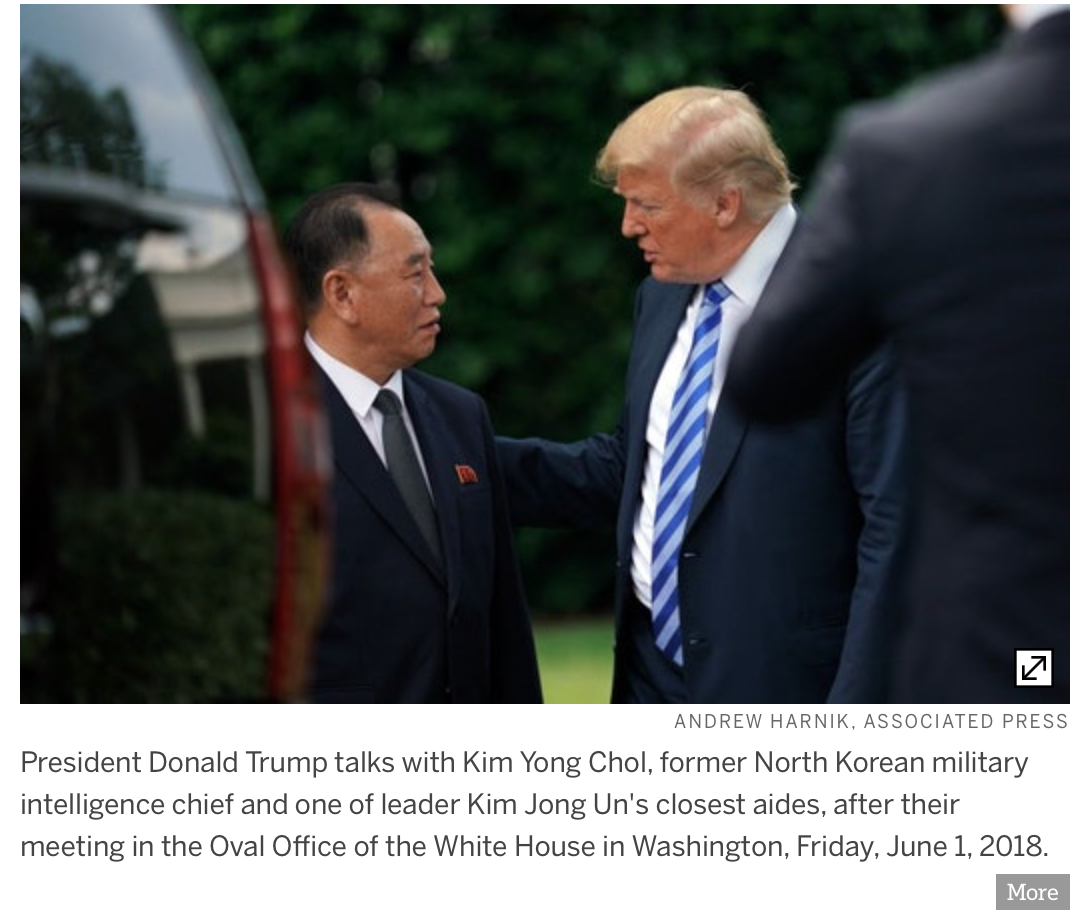

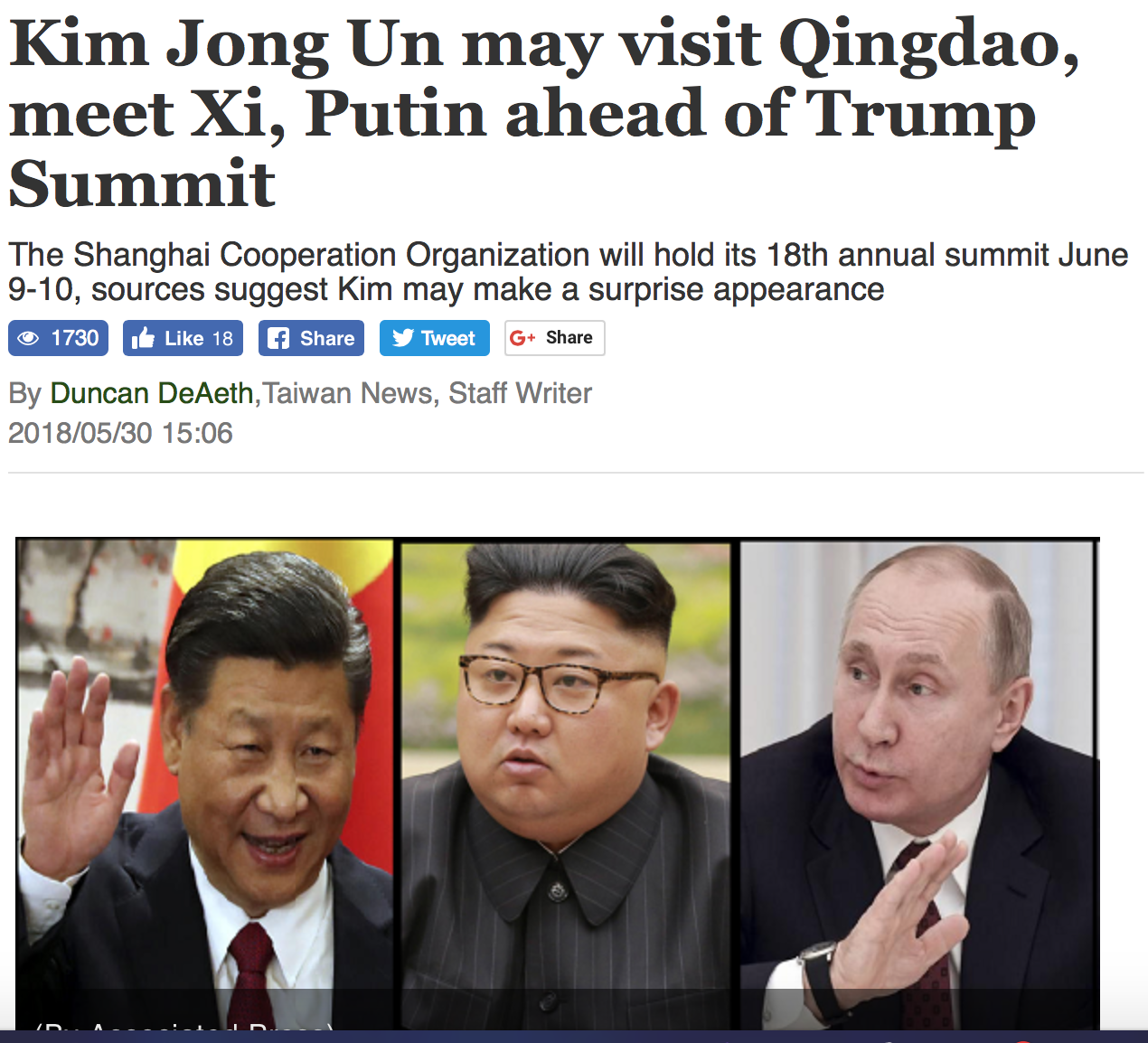










![In Praise of Blood by [Rever, Judi]](https://images-na.ssl-images-amazon.com/images/I/41Ck52FhVqL.jpg)






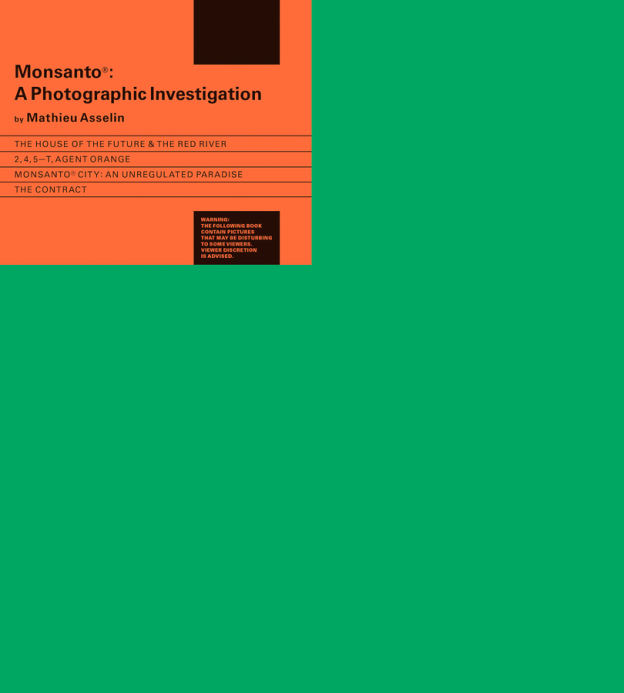










 g of the Singapore Summit is still unconfirmed and could be cancelled by either side.
g of the Singapore Summit is still unconfirmed and could be cancelled by either side.
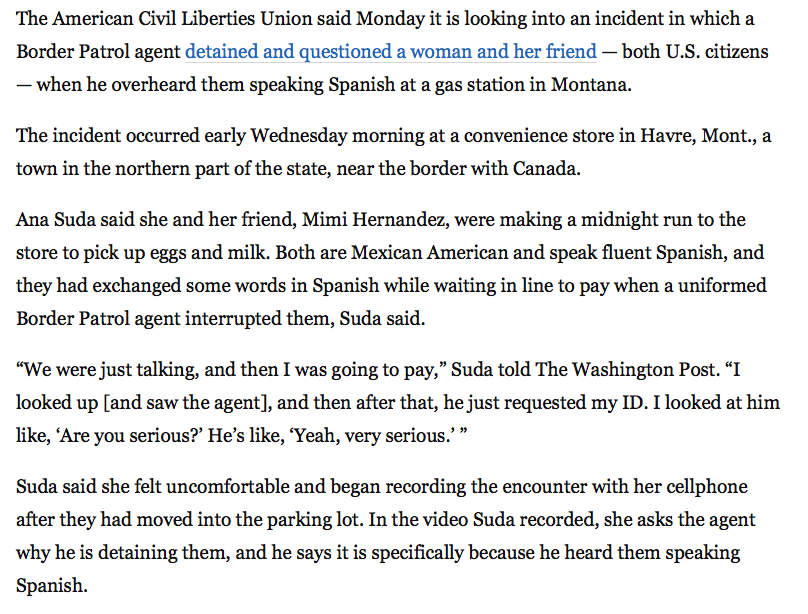

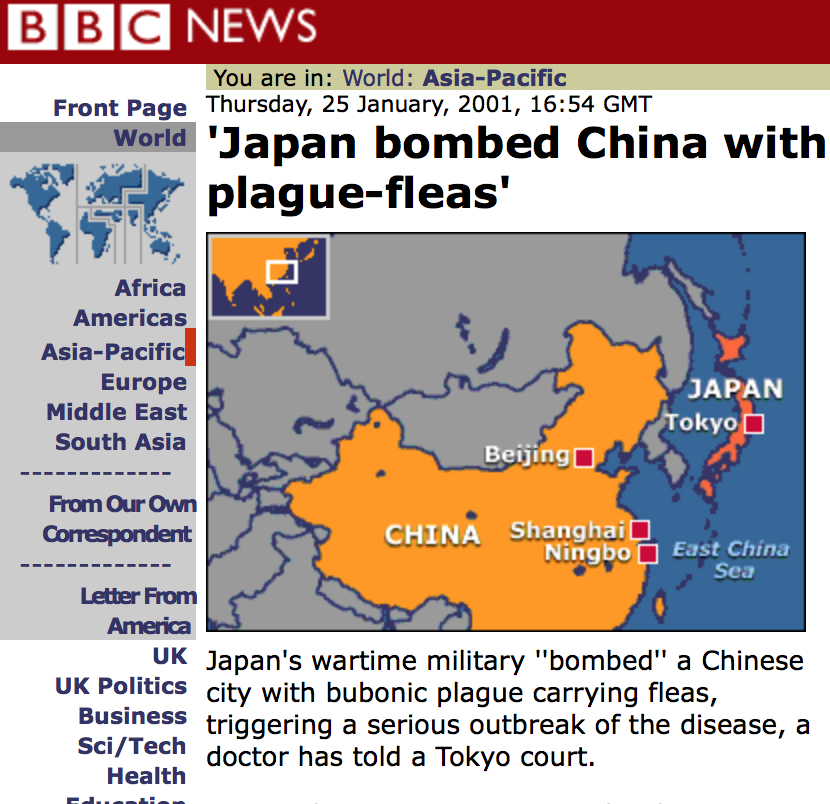



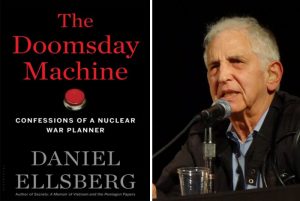


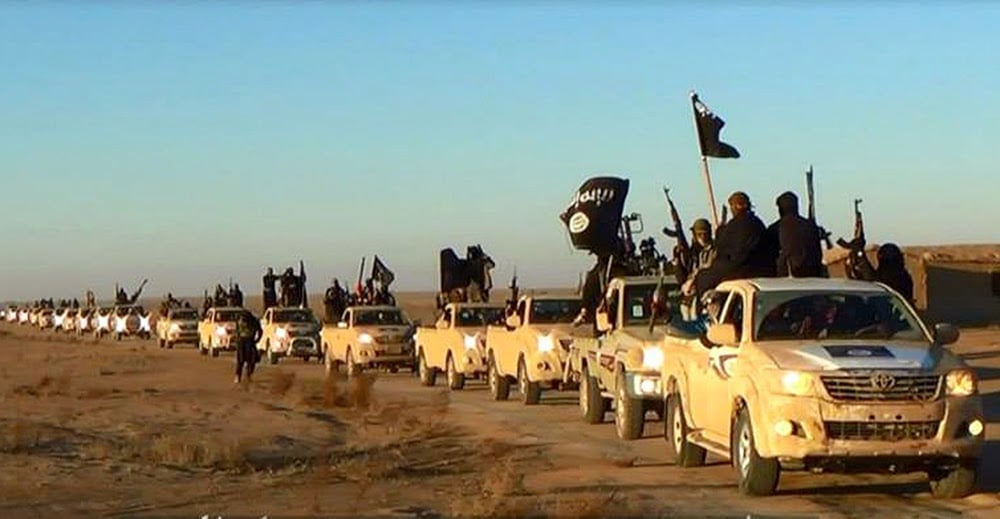
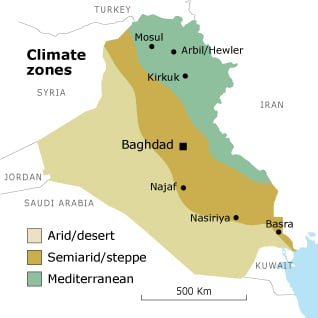





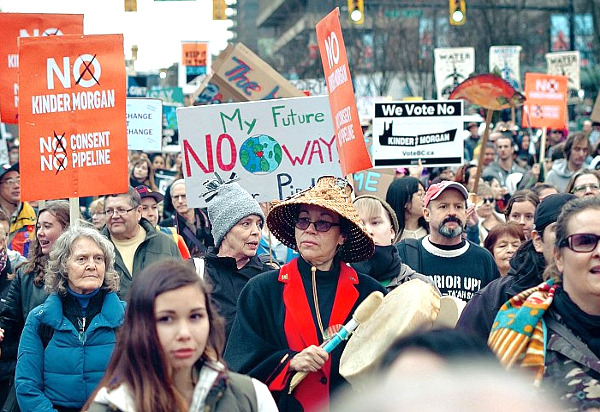
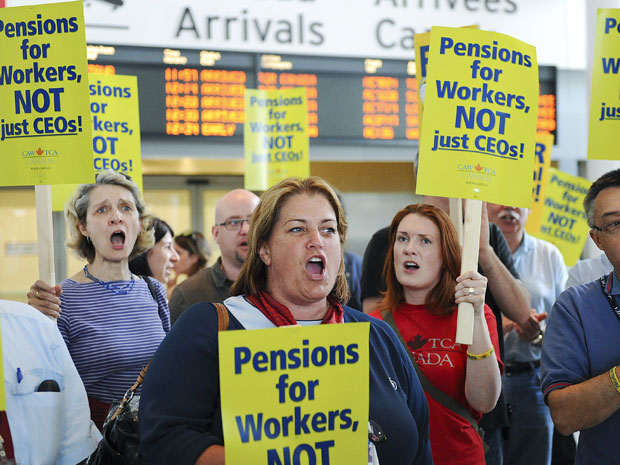 One solution would be to propose a conditional levy on pension surpluses to finance a fund for economic renewal. This fund could be bankrolled simply through funding excesses generated by pension plans like the CPP. The existing CPP remains a largely pay-as-you-go plan, with current contributions funding current benefits. Since 1997, however, higher contributions have allowed the CPP reserve fund, managed by the CPPIB, to grow to over $350-billion today, before swelling to a projected $6.7-trillion in 2090. Since it began in 1997, the CPPIB’s average return on CPP assets has been well above the necessary minimum long-run real rate of return; current assets are one-third again greater than was projected just ten years ago. Tapping only funding excesses in the CPP would preserve benefit security and leave plan provisions unchanged.
One solution would be to propose a conditional levy on pension surpluses to finance a fund for economic renewal. This fund could be bankrolled simply through funding excesses generated by pension plans like the CPP. The existing CPP remains a largely pay-as-you-go plan, with current contributions funding current benefits. Since 1997, however, higher contributions have allowed the CPP reserve fund, managed by the CPPIB, to grow to over $350-billion today, before swelling to a projected $6.7-trillion in 2090. Since it began in 1997, the CPPIB’s average return on CPP assets has been well above the necessary minimum long-run real rate of return; current assets are one-third again greater than was projected just ten years ago. Tapping only funding excesses in the CPP would preserve benefit security and leave plan provisions unchanged.



